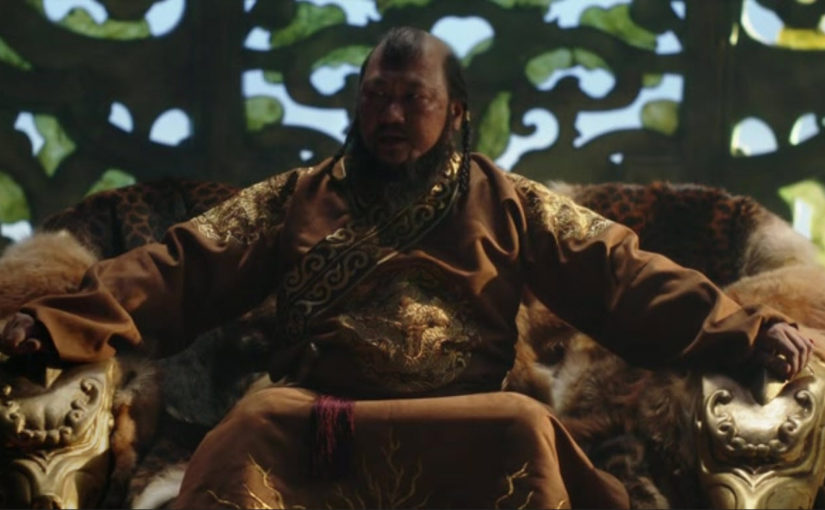Human history has been quite violent. From devastating pandemics to consistent war, our ancestors saw more action in a single week than most of us will see in our lifetimes.
We, living in our safe societies, has assumed that civilized safety is the norm. We are wrong. It isn’t. Violence is the norm.
Even if we have the numbers, it’s still difficult to imagine exactly how violent some of our history has been. Our most tumultuous times are now only remembered as statistics, even if they were a living nightmare for anyone unlucky enough to be there.
Consider the horrors during the collapse of society.
Here we discuss collapse scenarios and their stories. We look at historical events, and use them to predict future events. And, contrary to what we might want to believe, all nations eventually collapse. They do. This includes the largest empires on the face of the globe. Yes. This includes America.
Once they collapse, the survivors are either assimilated into other collectives, die off completely, or form new associations. Here, we look at the collapse of nations, empires and communities and what has happened during the events. These are just seemingly random reminders that the collapse of any society is possible and is often quite ugly.
This post…
This post is a compilation of musings that I have had for some time…
I have been wondering what it must have been for the people who were living in their nice stable societies when suddenly their entire world turned upside down. I wonder just how they felt when seemingly overnight, their entire life came crashing down.
America has NEVER experienced this.
Oh, some of the cities in the Southern States experienced this during the American Civil War, but they still were able to keep their English language, their history, and the deeds to their land. The people of Maine, for instance didn’t have the same experience that the citizens of Georgia or Alabama had to endure.
Nope. I’m talking about losing everything, and being grateful that you are still alive in a world that no longer speaks your language, where you are suddenly a third class slave, and every day is wracked with pain and agony.
America has never experienced THIS.
I say this because the collapse of the United States empire is probably going to be quite spectacular. It’s collapse will rival the fall of Asia before the great Mongol hordes.
The collapse of the United States is going to be spectacular.
I am going to concentrate on both Genghis Khan and Attila the Hun for illustration. There are many examples that I can use, but rather than get involved in other places and times, we’re going to keep things simple. Perhaps I can compare collapses using other nations and other times such as the Soviet Union, or the Comanche nation later on.
Most of this discussion revolves around the changes made by Genghis Khan.
Disclaimer
I cannot read tea leaves and have no way to predict the future aside from paying attending to trends in human behaviors. I have no special abilities in this regard. What I know about the MWI provides me with very little insight on our apparent future. Just my own part within it.
My advice to everyone is simple. Strengthen your relationships with your neighbors. Make yourself known. Know people in town by their first names and be welcoming to all your local neighbors. Don't get too caught up with the news. Observe prudence in stockpiling food, and basic necessities. Live in a rural area if possible. Keep positive thoughts for they will affect your surroundings.
I am not promoting anything, just simply discussing what happened in the past, and raising the alarm that it could very well happen again.
…
Oh good God, no!
…
Do not be under the impression that you and your children will always be able to get a Moca-frappe coffee at Starbucks. Times change. Sometimes they evolve peacefully and sometimes they collapse all together violently.

Genghis Khan and Attila the Hun.
Let’s look at history.
Both of these rulers are similar in that they both seized well-established societies and communities. And those communities had become soft, complaisant and easy targets for a more aggressive society.
The Huns were a nomadic people who lived in Central Asia, the Caucasus, and Eastern Europe, between the 4th and 6th century AD. According to European tradition, they were first reported living east of the Volga River, in an area that was part of Scythia at the time; the Huns' arrival is associated with the migration westward of an Iranian people, the Alans. By 370 AD, the Huns had arrived on the Volga, and by 430 the Huns had established a vast, if short-lived, dominion in Europe, conquering the Goths and many other Germanic peoples living outside of Roman borders, and causing many others to flee into Roman territory. The Huns, especially under their King Attila, made frequent and devastating raids into the Eastern Roman Empire. In 451, the Huns invaded the Western Roman province of Gaul, where they fought a combined army of Romans and Visigoths at the Battle of the Catalaunian Fields, and in 452 they invaded Italy. After Attila's death in 453, the Huns ceased to be a major threat to Rome and lost much of their empire following the Battle of Nedao. Descendants of the Huns, or successors with similar names, are recorded by neighbouring populations to the south, east, and west as having occupied parts of Eastern Europe and Central Asia from about the 4th to 6th centuries. Variants of the Hun name are recorded in the Caucasus until the early 8th century. - Huns - Wikipedia
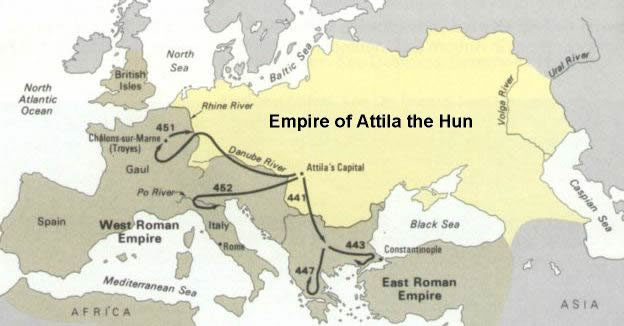
Genghis Khan (born Temüjin, c. 1162 – August 18, 1227) was the founder and first Great Khan of the Mongol Empire, which became the largest contiguous empire in history after his death. He came to power by uniting many of the nomadic tribes of Northeast Asia.After founding the Empire and being proclaimed Genghis Khan, he launched the Mongol invasions that conquered most of Eurasia. - Genghis Khan - Wikipedia
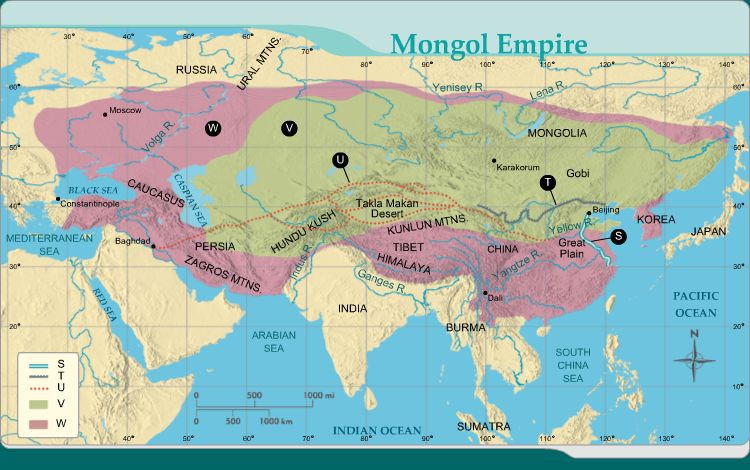
Both Genghis Khan and Attila the Hun utilized superior military forces.
For the cities and cultivated places in the Mongols’ path, they were a natural disaster on the order of an asteroid collision. Like the Huns and the Scythians before them, they came from the steppe grasslands of central Asia, which produced their great resource of horses and draft animals. After Genghis Khan united a number of Mongol tribes into a single horde under his command in the early thirteenth century, they descended on cities in China, India, Afghanistan, Persia, Turkestan, and Russia. Between 1211 and 1223, they wasted dozens of cities and wiped out more than 18.4 million people in China and environs alone. -Brandon Christenson
These forces were trained and promoted through merit. They were lead by officers who obtained their positions through merit. In total these experts moved forward to conquer cities and nations. Nations, mind you, that had grown soft by a life of ease, internal political squabbling, and a digression away from meritorious behaviors.
Why is this important?
- Attila the Hun = Russian Prototype = 450 AD
- Ghenghis Khan = Chinese Prototype = 1200 AD
The time difference between the two is roughly 750 years.
So if you add 750 years to the time of Ghenghis Khan you end up with 1950. And in 1950 the largest nations in the world were China, Russia and the United States.
Using this rough calculation we can see that the decades following this date are significant for catastrophic changes in well-established nations.
- China departure from pure communism to commercial socialism = 1970’s.
- Russia departure from pure communism to democratic socialism = 1990’s.
- American departure from oligarchical rule via democracy to a new form … 2020’s or so…
Every indicator is “red lining” and pointing to a massive reorganization of the United States. It may be voluntary, or it can be forced through catastrophic events. It might be initiated by the citizens themselves, or it can be aggravated through outside influences.
Though, reading the comments on social media, tells me that America is ripe for yet another fight. Ready to battle the world, Russia and China, for "democracy". Totally oblivious to the consequences of global thermonuclear war.
What ever the cause, the developments, the reasoning, the mechanism or the intent… there WILL be changes coming to America in the 2020 decade. Here we discuss what it was like when the changes were brought forth suddenly to communities, cities and villages, in the past.
Please note all of these changes could have been prevented.
In every case it was the leadership of those cities, nation-states, and communities that “opened the door” for the rapid disintegration of their cultures, societies and lifestyles. In all cases, they misjudged the Huns, the Mongols, Attila, Ghenghis Khan, and their strengths. They viewed themselves technically, socially, spiritually, and culturally superior to the Asian horde.
They mistakenly believed that their previous national accomplishments, public structures, military campaigns, social importance, cultures and the arts were strong enough to withstand assault from outside threats.
They sat fat and comfortable in their capital cities, enjoying their concubines, eating lavish meals and trusting that things would forever continue on that path.
It was the national leadership that caused the destruction of their cities.
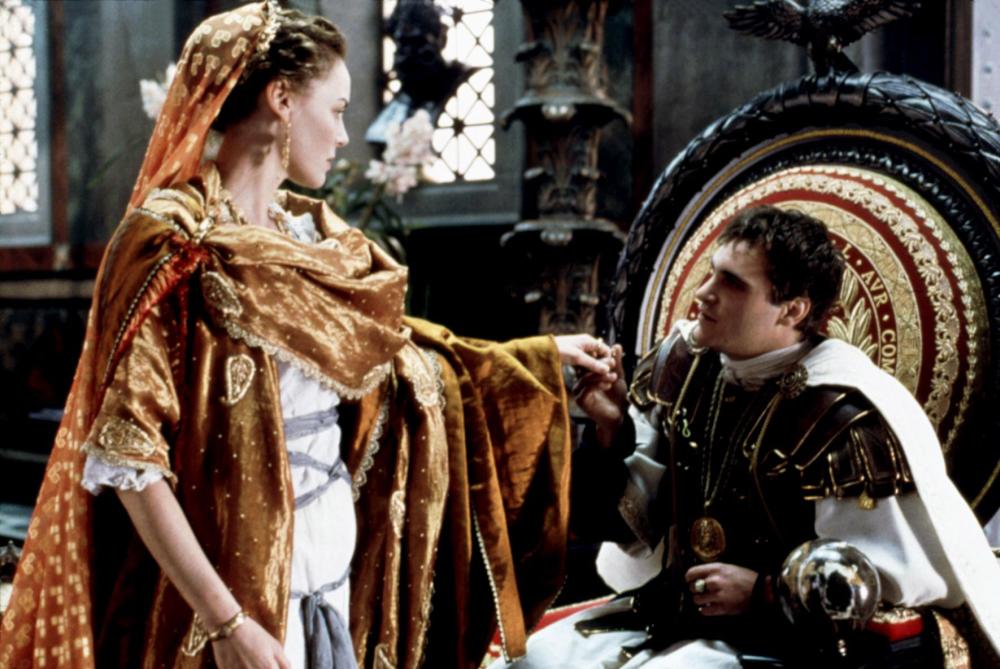
Leadership through merit
One of the most amazing things about the Mongols is that they had such exceptional leadership, even though they didn’t have much in the way of formal education.
The tactics and strategies employed by Genghis Khan and his greatest general, Subutai, were revolutionary, and at the time almost unstoppable.
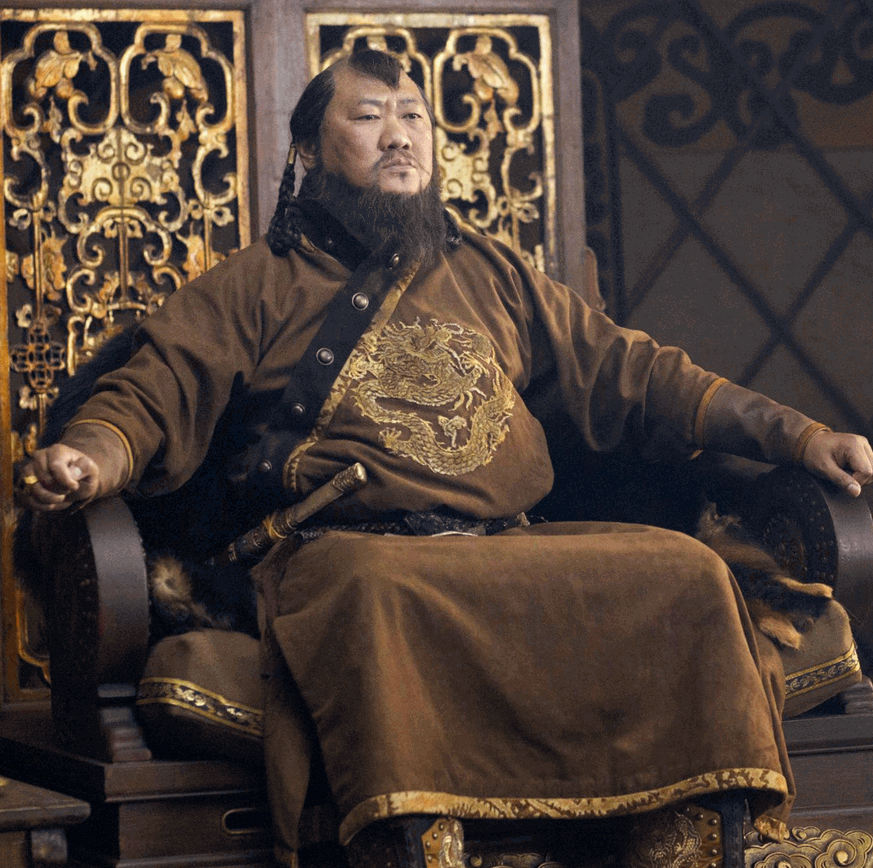
Genghis created a meritocracy where the strongest and most talented rose to the top, and managed to unify the fighting Mongol tribes under his rule.
Leadership through merit creates a dangerous power.
General Subutai was able to simultaneously control two large armies, hundreds of miles away from each other. Pretty amazing in a time where communication was via horseback.
He was no slouch.
General Subutai won sixty five (65x) pitched battles, and masterminded over 20 military campaigns.
Leadership though merit will win over popularity or wealth every time.

The collapse of cities before Genghis Khan
We start our study by looking at some tales of cities that fell before the might of the Mongol hordes.
Now, empires, nations and civilizations don’t typically collapse due to war alone. It is often a combination of factors. Of which, war and violence is the most spectacular attribute.
- Social collapse.
- Political collapse.
- Economic collapse.
- Ethical collapse.
- Physical collapse of infrastructure.
So, when Genghis Khan took over Asia, he did so not only with his superior forces, but through the knowledge that the cities were ripe for looting.
The cities were soft. Their people have become soft. Their rulers… soft.

Their leadership was weak, and their military, while in numerous cases quite state-of-the-art, lost their ability to adequately assess threats, and dangers and take strategic action. They were led by weaklings, political appointees or nepotism.
They were not led through merit.
The cities started to adopt unhealthy behaviors and strange mannerisms. These in turn, isolated them from the surrounding communities. They began to get the reputation as a “loony bin” or place where people live “within their own bubble”. Today, even still, we refer to some of these cities such as Babylon, as a place of degradation.

The collapse of a nation is caused by a combination of factors. Often, it is a superior culture or society confronts a stable but “soft” culture.
Most military historians judge that no European force could have stopped the disciplined and innovative Mongolian armies. “Employed against the Mongol invaders of Europe, knightly warfare failed even more disastrously for the Poles at Legnica and the Hungarians at Mohi in 1241” -Stephen Hicks
You see the events around Genghis Khan are archetypal for the human condition.
Societies migrate from the K-reproductive strategy towards the r-reproductive strategy. Other societies do not, and then we have a situation where a K-reproductive strategy civilization encounters a r-reproductive society.
Blood is thus shed.

Humans get comfortable, they get fat and lazy, and leaner, and meaner people confront them and take everything from them. The tough, the strong, and the aggressive takes from the weak and meek.
“The greatest joy for a man is to defeat his enemies, to drive them before him, to take all they possess, to see those they love in tears, to ride their horses, and to hold their wives and daughters in his arms.” -Genghis Khan.
While this historical example (Genghis Khan) is actually referring to the physical seizure and physical destruction of people, place and things, we are referring to a far wider scope of assault.
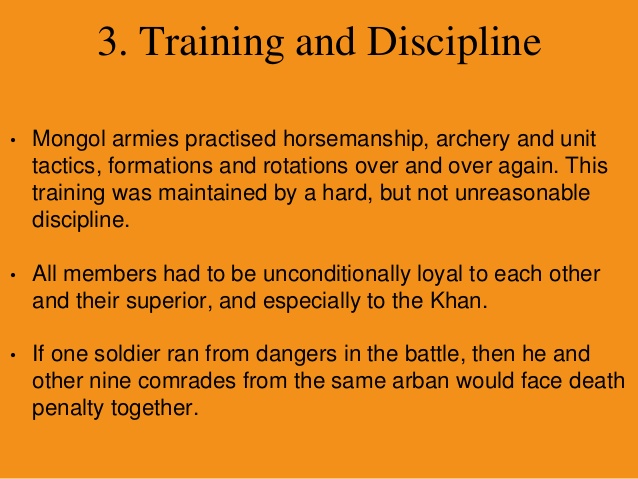
This can be military, as we have mentioned. It can be economic. It can be cultural. It can be sociological, and it can be ideological.
And, it can certainly be a combination of the above.
The Mongol were masterful at spreading fear and hate throughout Asia, people feared them, and therefore hated them. They would rape and pillage entire villages, and torture their victims for fun. Nobles would get it the worst. Spilling noble blood was considered a crime, so they simply crushed them to death, which took many hours. Mongols would literally dine on top of them, making merry to the sounds of their screams from underneath. The sounds of bodies squelching, and bones snapping didn’t faze them. But rumors of this execution method struck terror. Fear made them even more powerful, and more feared, as people often chose to surrender and pay tribute rather than risk fighting them.

They cultivated the illusion to sow fear into their enemies. And, you know, everyone who wasn’t a Mongol was their enemy.
Mongols also ate meat tenderized by being sat on beneath their saddles on long journeys; marmot steeped in sour milk; curds dried in the sun; roots, dogs, rats—almost anything, according to several observers. Marco Polo, who traveled among them in the years 1275-92, wrote that they ate hamsters, which were plentiful on the steppes. A Franciscan friar who in 1245 went to seek out the Great Khan in the hope of persuading him to become a Christian reported that, during a siege of a Chinese city, a Mongol army ran out of food and ate one of every ten of its own soldiers. Mediterranean people who knew the Mongols only by reputation believed they were creatures with dogs’ heads who lived on human flesh. Other Mongol facts: On their treeless steppes, they tended to get hit by lightning a lot. Thunder terrified them. They wore armor made of scales of iron sewn to garments of thick hide, and iron helmets that sometimes came to a point on top. Their swords were short and sometimes curved. The notches in their arrows were too narrow to fit the wider bowstrings of the Western people they fought, so that the arrows could not be picked up and shot back at them. Mongol bows, made of layers of horn and sinew on a wooden frame, took two men to string. Warriors carried them strung, in holsterlike cases at their belts. Mongols had no words for “right” and “left,” but called them “west” and “east,” respectively. When anyone begged from them, they replied, “Go, with God’s curse, for if he loved you as he loves me, he would have provided for you.” -The New Yorker
Human nature & Poland
Why do humans tend to get weak and soft? It’s in our nature. It’s called the r/K theory, and it’s worth a read. (Opens up in a separate tab.)

An anecdote from my most-recent visit there (Poland), which was three years ago. I was in the historic downtown of one of the smaller cities. My brother-in-law and I were at an outdoor table of a restaurant. Next to us were two men, maybe mid-twenties. They discussed something. One of them was passionate about the subject and the other was listening. For the first time ever in all of my visits to Poland, I felt that my SMV is behind the curve there. Age does its thing, of course, but that wasn’t it. Rather, after twenty years of my regular visits, I felt that… the young men there suddenly looked taller, better dressed, more intelligent, less awed by a shiny foreigner, more ready to give you that piercing look like they can make it hurt. They are healthy people who see the same global war on Whites that I do, encircling their country. The difference between me and them, is that I as a sort-of American represented a conquered people and they represented free men. What a difference that makes. -PA "A Normal Country"

“Normal country.” Ordinary people in a normal country aren’t going to be defensive or get in your face. Nor will they hem-and-haw like a normie-cuckservative who watches his words lest a non-lie slips out. What they will do, is patiently and politely tell you the simple truth because they are not ashamed of anything.
This is why Poland is so unusual to Western observers. It is a normal country in which men are masculine and women are feminine. Peter Sweden’s flattering comment about Poles should be as banal as an observation that the people there have two arms and two legs each. Yet it’s a startling observation because proper masculinity and femininity are under attack. Under these circumstances, Poland is paradoxically an extraordinary normal country. And so be it.
When people move away from “normal”, they become soft and easy prey for the rest of the wild dangerous world…
Here’s a shout out for Mr. Putin. You all might want to compare him to his American equivalent; Barrack Obama.

An important note
It is so very easy to get all caught up in history; dates, places and names. It can become so confusing if you are coming flush without any context to put the information into perspective.
Here, I am going to throw out some stories, history and details related to events and leaders of the past. This includes various generals, and leaders and the actions that they took. When names are given, it’s pretty much assumed that they are a ranking general.
- Subuta = General Subuta
- Tolui = General Tolui
There will be figures thrown about… 100,000 killed, 5000 ships sunk, 350,000 civilians slaughtered, etc. These are enormous figures and it is very difficult to put into perspective.
To keep things reasonable, consider that when figures such as these are mentioned, assume them to mean 95% of the people were killed, or 98% of the city was slaughtered. Or 100% of the ships were sunk.
Please do not get too caught up in the details.
It’s easy to get bogged down. Just read and learn that our past is a violent one, and enormous groups of people were caught up in very difficult times where survival was a rarity.
When a city was sacked our under siege, the surrounding environment was completely picked clean. The Mongols would forage for food, livestock and property. Homes, villages and communities were emptied. Roving band of marauders would attack individual communities and young boys would be set forth to learn how to sack a household on their own.
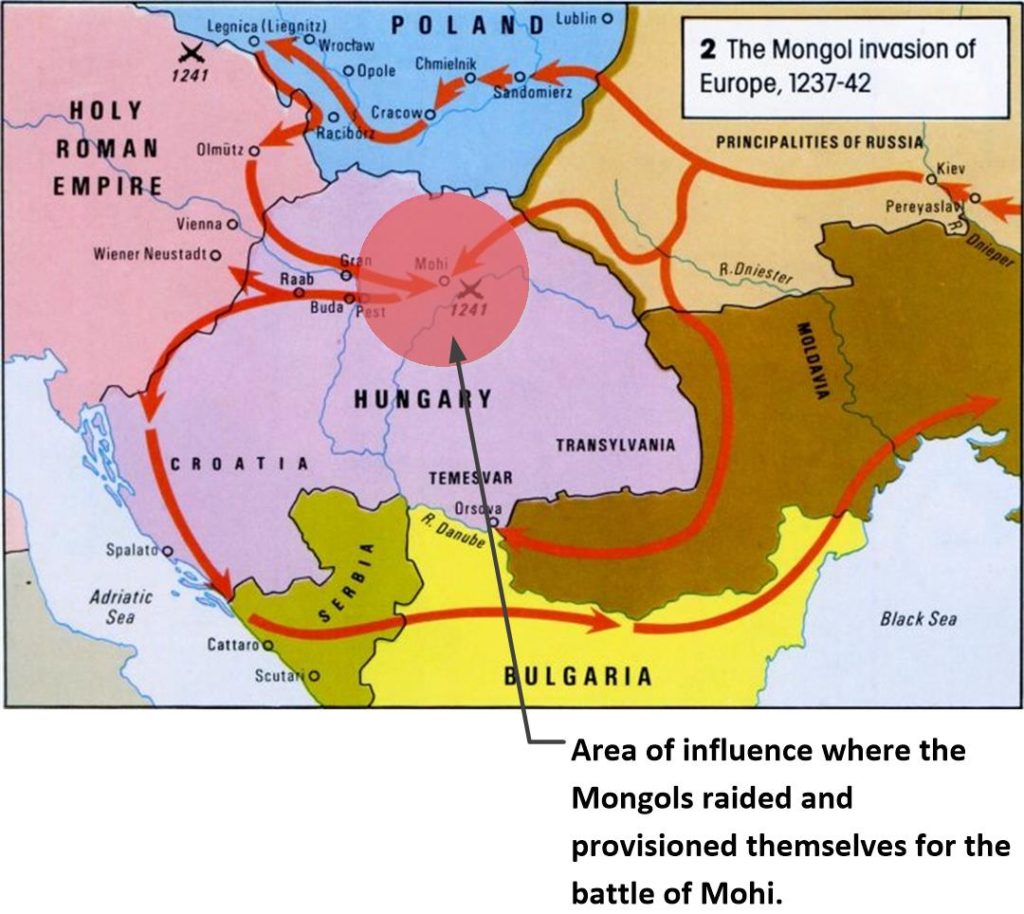
The Mongols were like a plague of locusts eating and destroying everything in their path.
Speaking of Mohi…
Do not underestimate the dangerous
The Battle of Mohi was one of the most devastating battles in European history.
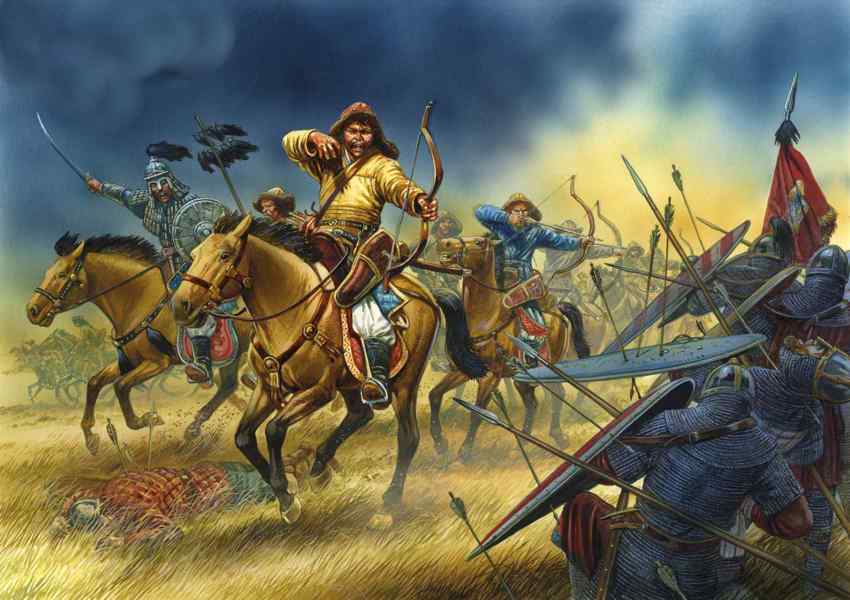
The Battle of Mohi, or Battle of the Sajó River, (on April 11, 1241) was the main battle between the Mongols under Subutai and the Kingdom of Hungary under Béla IV during the Mongol invasion of Europe. It took place at Muhi or Mohi, southwest of the Sajó River. Mongol use of heavy machinery demonstrated how military engineering could be put to effective and strategic use. After the invasion, Hungary lay in ruins. Nearly half of the inhabited places had been destroyed by the invading armies. Around a quarter of the population was lost, mostly in lowland areas, especially in the Great Hungarian Plain, where there were hardly any survivors; in the southern reaches of the Hungarian plain in the area now called the Banat, and in southern Transylvania. - Battle of Mohi - New World Encyclopedia
25% of Hungary’s population was wiped out by after the Mongol incursions.
Half of all livable places had crumbled, smashed to bits by hordes of Mongols. Losses were heavy on both sides, but the Europeans suffered most. This was the most important major battle of the war between Hungary and the Mongolians.
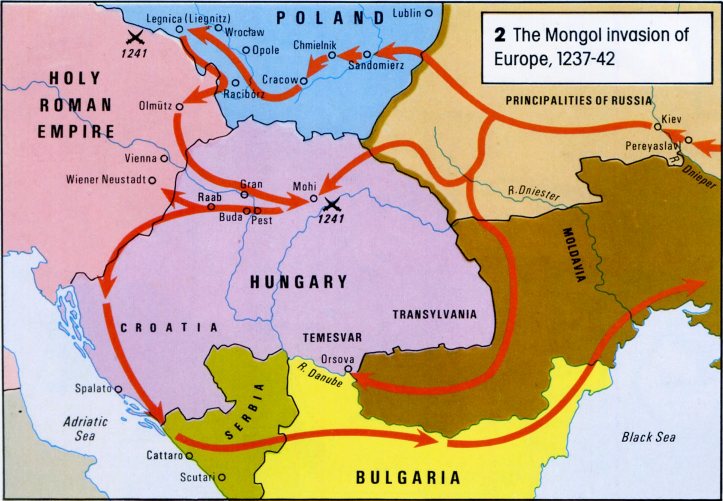
After this major battle, Hungary was pretty much disarmed.
No armies remained to fight the Mongolians. Those few Hungarian survivors fled the area as fast as they could, leaving the cities. towns and villages undefended.
What followed was a tidal wave of death and destruction, as Mongol hordes rampaged through Hungary destroying cities, towns, communities, hamlets and habitations as they went.

It is terribly bad.
It made Hitler’s scorched earth policy look like a “walk in the park”.
A scorched-earth policy is a military strategy that aims to destroy anything that might be useful to the enemy when retreating from a position. Any assets that could be used by the enemy may be targeted. This usually includes obvious weapons, transport vehicles, communication sites, and industrial resources. However, anything useful to the advancing enemy can be targeted including food stores and agricultural areas, water sources, and even the local people themselves, although this has been banned under the 1977 Geneva Conventions. The practice can be carried out by the military in enemy territory, or in its own home territory while being invaded. It may overlap with, but it is not the same as, punitive destruction of the enemy's resources, which is usually done as part of political strategy, rather than operational strategy. - Wikipedia
Bela IV, the King of Hungary, actually had to run to his archenemy, Duke Frederick, for safety. Frederick extorted him for as much as possible, including three of his countries.
He was a coward, but he lived on…
And his nation was remade in the image of the conquering Mongol armies.
What must it have been like… I wonder…
Looting of a Gallo-Roman Villa, Painting by Georges Rochegrosse
We begin our study into this historical trend by looking at a fine painting by Georges Rochegrosse. It is titled “Looting of a Gallo-Roman Villa”, and it’s wonderful.
Let this painting tell the story of what to expect when a nation is ruled by the soft, corrupt and effeminate. Here we have a scene somewhere in the wealthy sections of the Roman empire.
Members of Genghis Khan’s armies have moved upon the villa. They killed the soft, fat and chubby wealthy owner, and took possession of his wives, sons, daughters and slaves.
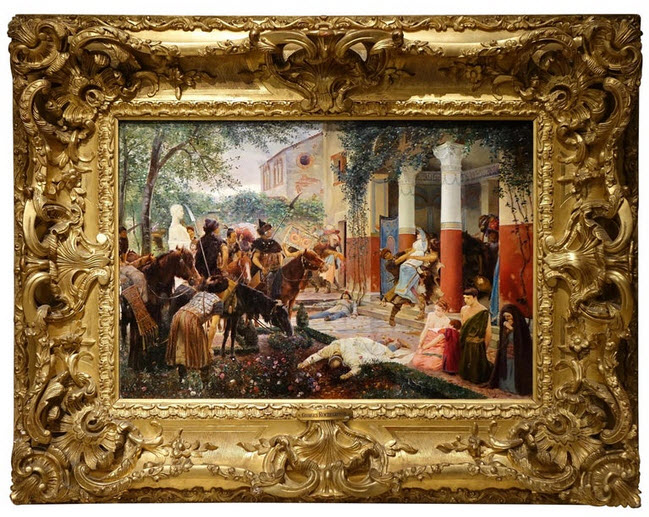
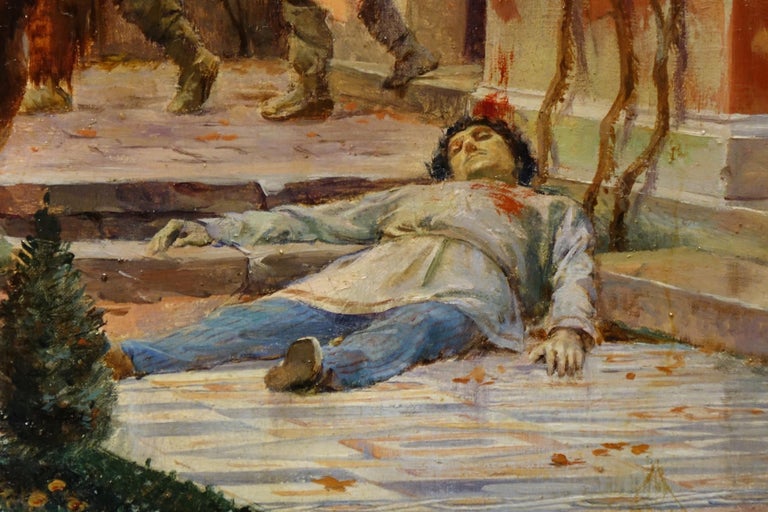
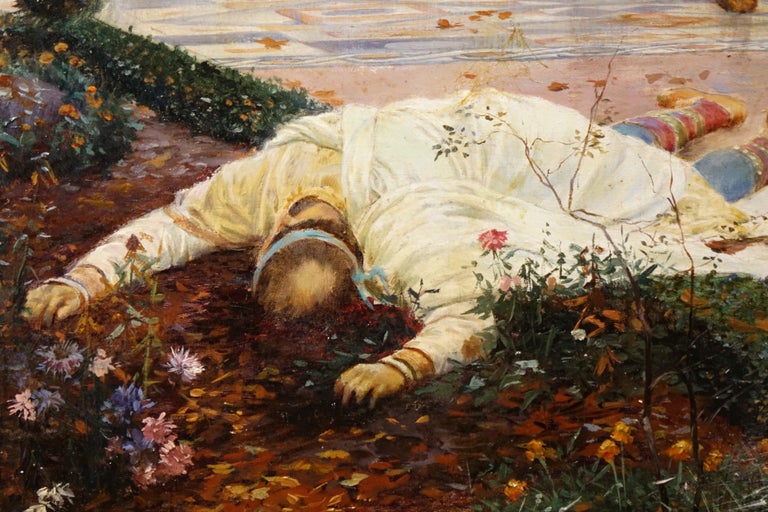
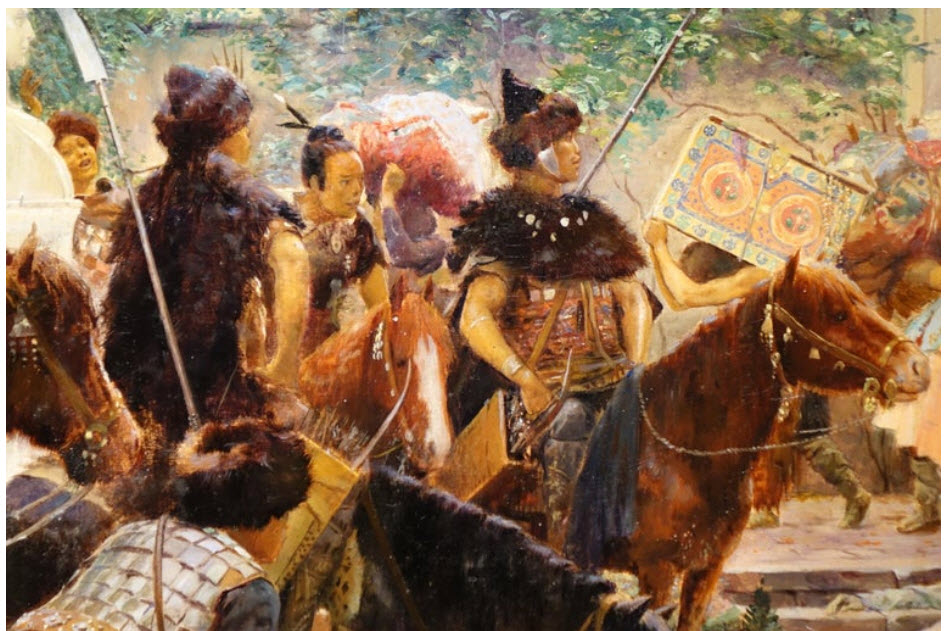
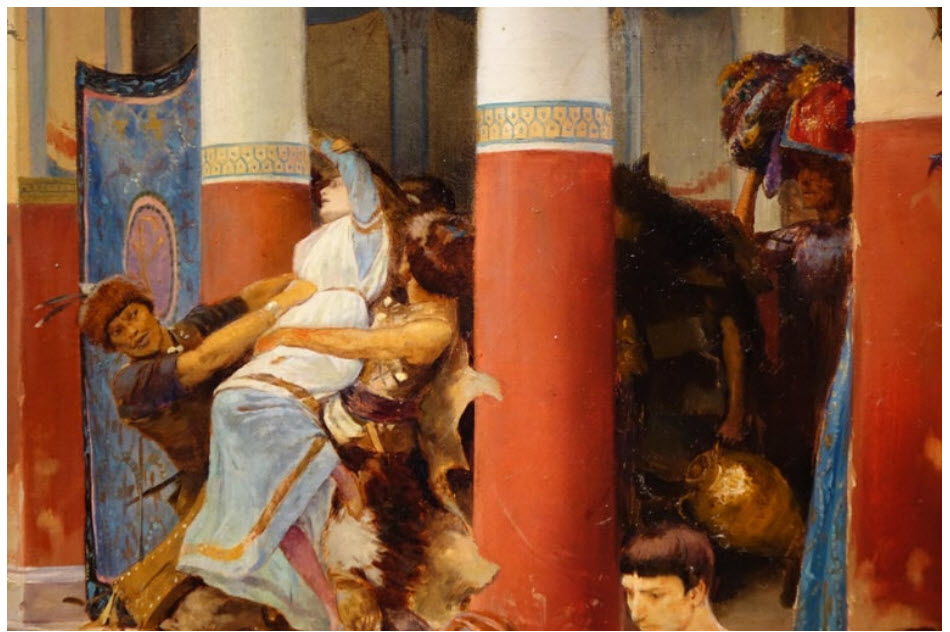
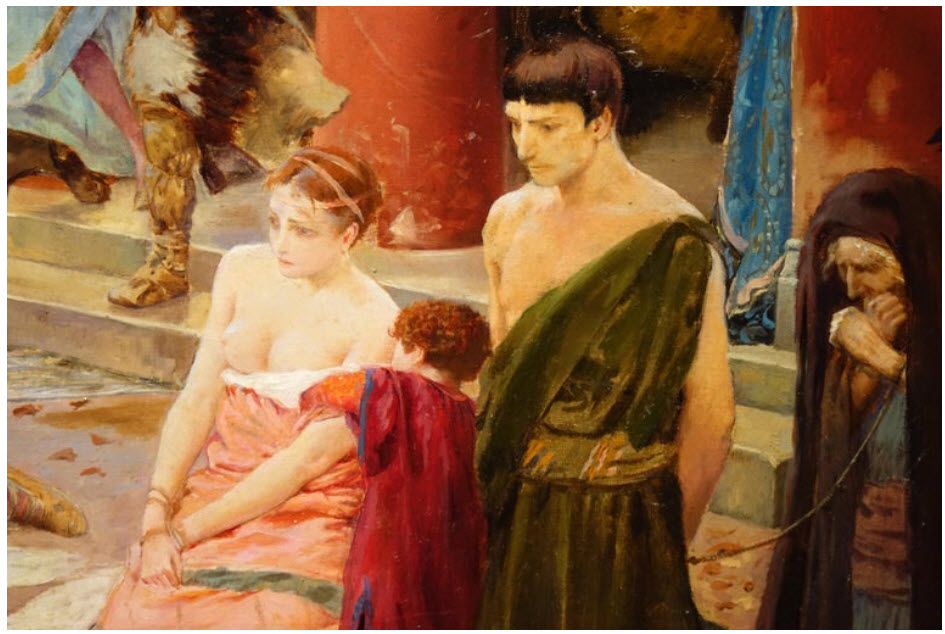
The reader should never be under the impression that humanity has moved away from this reality. Technology has changed, but human nature has not.
Human nature has NOT changed.
The Nature of the society with advantage
In a nomadic society, you can’t afford to have slackers. There’s just too much work to be done. So that means it there’s no room for anyone who can’t make him or herself useful, women and children included.
This includes everyone, and if slaves cannot do what they are told, they are killed immediately.
Genghis Khan believed in being rewarded for hard work, and operated on a meritocracy over a nepotistic system. Many of his highest ranking officers and generals had earned their way to those positions, instead of simply being born to a particular family. -Factinate
It’s not just the men folk. It’s everyone in the entire community.
According to the University of Victoria, Mongolian women were not only expected to shoulder a lot of the responsibility, they were also expected to do a lot of the heavy lifting.
This differs substantially from the lifestyle of the wives and women of the lands that they conquered.

While all women had to “earn their keep” in the households, the more “advanced the society”, the weaker and softer the women became. Rather than be tough, handling the daily chores, raising the children and supporting their men, they chose a life of ease and sloth.

As such, when SHTF back “in the day”, there was little that they could do aside from submit to their conquerors. The women quickly learned their role in the new society or were killed. There were no other options.
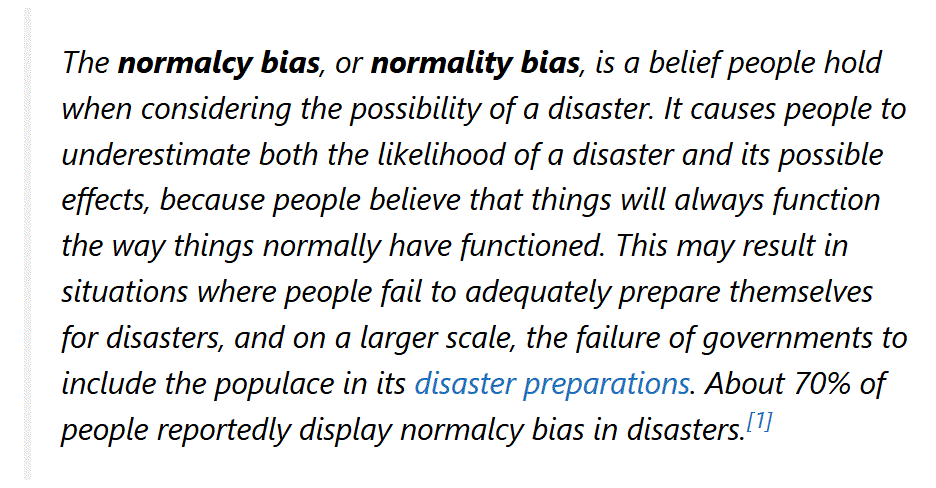
It must have been very difficult for the pampered women of the aristocratic classes…
Women who worked were not at all admired or esteemed. Compared to their counterparts in ancient Greece, Roman wives of the upper classes were shocking in their visibility in public. Married women appeared in public, with their husbands, or with a retinue of attendants. They went shopping, attended festivals, sacrifices, games, and entertainment. They acted as hostesses and dined out. They attended women-only social events. Aristocratic women spent a great deal of time on personal grooming and beauty preparations. - Women in Ancient Rome: Women's Daily Life and Work
A superior culture is one where everyone has a role, and works to the best of their ability. Leadership and success is determined by merit.

Using Merit and Ability to control the weak and meek
Genghis Khan amassed the largest contiguous empire the world had yet seen. Only the British Empire, when it included both Canada and Australia, would be larger.
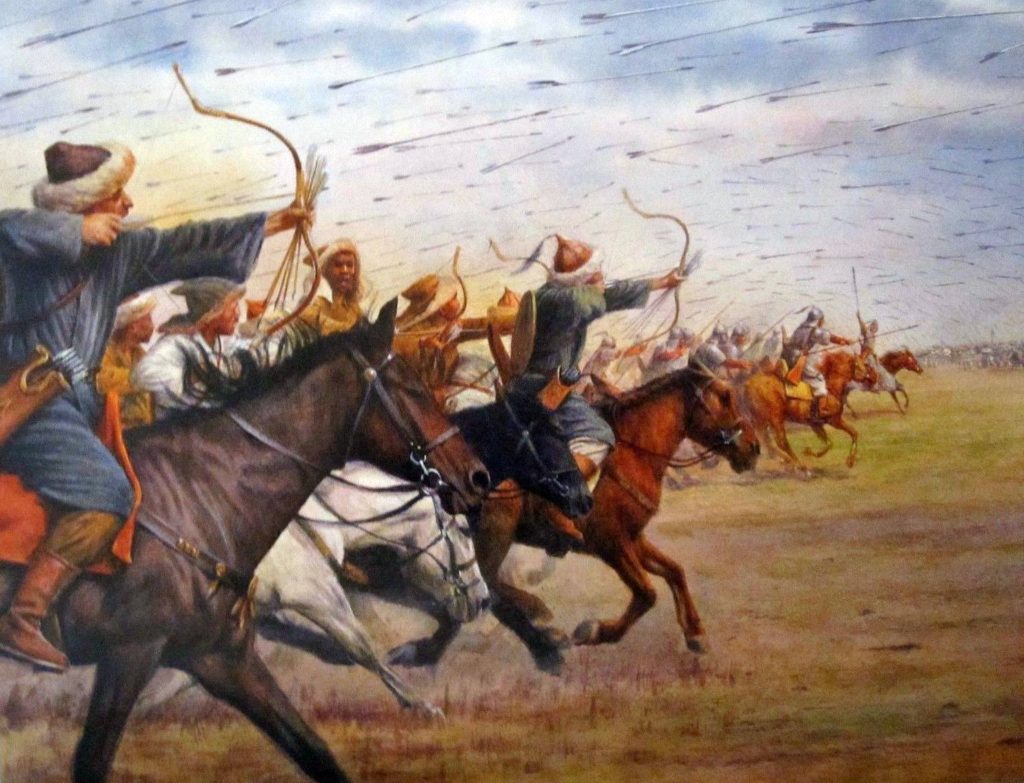
Unlike Alexander the great, the Caesars or the Persian emperors, Genghis Khan’s idea of conquest was not to occupy and rule another people, but rather to rape, pillage and destroy everything in his path.
We was a warlord of destruction.
Genghis Khan was a man of reason. He let the people in the Mongol Empire live a happy life as long as they followed his rules. However, Genghis Khan cruelly punished everyone who tried to break those rules. For example, when the governor of one of the cities in the Khwarazmian Empire took over Genghis Khan's trade caravan and killed all the traders, Genghis Khan went berserker. He sent 100,000 Mongols to the Khwarazmian Empire and killed thousands of people, including the governor. Genghis Khan poured molten silver into the governor's eyes and mouth until the poor guy roasted from the inside. That was a clear sign that anyone, stupid enough to harm the Mongol Empire, would have to face devastating consequences. History shows that spreading fear worked perfectly in Genghis Khan's favor. He still needed to invade some rebellious places from time to time, but for the most of the time, people in The Mongol Empire behaved really well. -The Richest
He purged the lands of all human opposition, all human constructions, all human education and learning, and all human influence.
Then he remade it in his own image.
Worse was to come in 1221 — ‘a year to live in infamy’. While Genghis’s other armies had been busy in the east, threatening Tbilisi in Georgia and terrifying the Christian world, Tolui, one of Genghis’s equally reprehensible sons, took Merv (in modern-day Turkmenistan), then one of the largest cities in the world. Promised safety, the citizens surrendered and emerged from behind their walls. Tolui looked at the mass of people placed in front of him. He ‘surveyed the masses dolefully gathered with their possessions, mounted a golden chair and ordered mass executions to commence’. They took four days and nights to complete. Genghis’s rotten fruit did not fall far from the tree. Terror — and the certainty of its visitation — was a major weapon in Genghis’s arsenal: decapitated women, children and even cats and dogs were reputedly displayed. But while the butchery was indeed immense, it is worth questioning its extent on occasion: a depopulated city had little economic value, and imported colonisers could make up only so much of the shortfall. - Was Genghis Khan the cruellest man who ever lived?
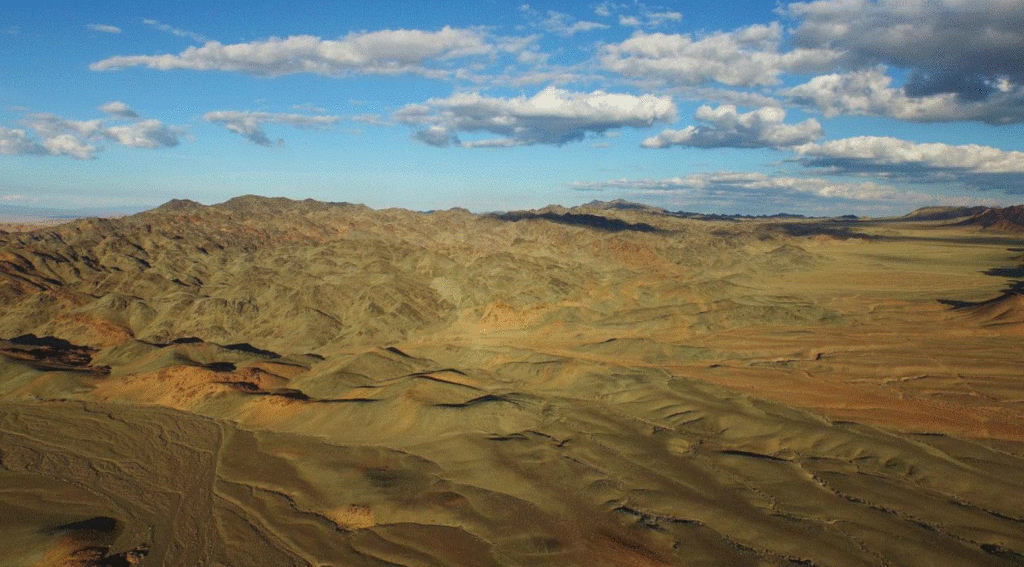
His total disregard for human life led to him being utterly feared throughout virtually the entire Eurasian land mass.
When George Curzon visited the ruined city of Merv in 1888, the vision of its decay overwhelmed him. “In the midst of an absolute wilderness of crumbling brick and clay,” the future viceroy of India wrote, “the spectacle of walls, towers, ramparts and domes, stretching in bewildering confusion to the horizon, reminds us that we are in the centre of bygone greatness.” In its 12th-century pomp, Merv straddled the prosperous trade routes of the Silk Road. It was a capital of the Seljuk sultanate that extended from central Asia to the Mediterranean. According to some estimates, Merv was the biggest city in the world in AD1200, with a population of more than half a million people. But only decades later, the city was effectively razed by the armies of Genghis Khan in a grisly conquest that resulted – if contemporary accounts are to be believed – in 700,000 deaths. A trader arriving from Bukhara to the north-east or from Nishapur to the south-west would once have been relieved at the sight of Merv. Crisscrossed by canals and bridges, full of gardens and orchards, medieval Merv and its surrounding oasis were green and richly cultivated, a welcome reprieve from the bleakness of the Karakum desert. The city’s enclosing walls ran in an oblong circuit of five miles, interrupted by strong towers and four main gates. Its streets were mostly narrow and winding, crowded with closely built houses and occasional larger structures: mosques, schools, libraries and bathhouses. The citadel of the Seljuk sultans – replete with a palace, gardens and administrative buildings – loomed over the north-eastern part of Merv. Many different polities chose to make Merv the seat from which to rule Khurasan, a region that included eastern Iran and parts of modern-day Turkmenistan, Uzbekistan, Tajikistan and Afghanistan. “For its cleanliness, its good streets, the divisions of its buildings and quarters among the rivers … their city [Merv] is superior to the rest of the cities of Khurasan,” wrote the 10th-century Persian geographer and traveller al-Istakhri. “Its markets are good.” Reaching Merv, the visiting trader might lead his pack-animals into the open courtyard of a two-storey caravanserai (an inn with a courtyard for travellers), where he would jostle for space with other merchants from as far as India, Iraq and western China. Or he could go straight to one of Merv’s large markets, convened outside the gates of the town or sometimes near its major mosques. The smoke of potters’ kilns and steel-making furnaces (Merv was famous for its crucible steel) would have hung over the surrounding industrial suburbs. If the trader was feeling hot, he might step inside the icehouse on the city outskirts; a tall conical building where residents accumulated snow during the winter and which they used like a vast mud-brick fridge. Maybe he paid a visit to a member of the city’s elite who lived in a koshk (a fortress-like home outside the walls removed from the dust and noise of the city). If he followed the route of the Majan canal, which ran up the middle of the city, past the workshops of embroiderers and weavers, he would reach both Merv’s central mosque and the adjacent monument, the mausoleum of Sultan Sanjar. Built in AD1157 to honour the long-ruling Seljuk sultan, the mausoleum was a large, square-shaped building rung with fine arches, capped by a dome sheathed in turquoise-glazed tile. The dome was so intensely blue that according to the Arab geographer Yaqut al-Hamawi, who visited Merv in the 13th century, “It could be seen from a day’s journey away.” The city was known as Marv-i-Shahijan or “Merv the Great”, the largest and most famous of a succession of towns in the Merv oasis. In fact, the city sat alongside an earlier incarnation of Merv just to the east, known as Gyaur-kala (“fortress of the pagans”). Gyaur-kala flourished under the Sassanid kings of Persia from the third to the seventh centuries AD. Archaeologists have found evidence in this older Merv of a cosmopolitan urban society, boasting communities of Zoroastrians, Buddhists, Manicheans, Christians and Jews. Under Muslim rule from the seventh century onwards, the locus of urban activity shifted west across the Razik canal to what would become Marv-i-Shahijan (also known as Sultan-kala, “fortress of the sultan”). Many of Gyaur-kala’s structures were probably cannibalised for material in the construction of the new Merv, and industrial workshops, kilns and furnaces sprung up amid its ruins. Merv was famous for its exports, especially its textiles. “From this country is derived much silk as well as cotton of a superior quality under the name of Merv cotton, which is extremely soft,” noted the 12th-century Arab geographer al-Idrisi. Robes and turbans made from Merv cloth were popular around the Islamic world. So too were Merv’s much-loved melons. “The fruits of Merv are finer than those of any other place,” wrote Ibn Hawqal, a 10th-century Arab chronicler, “and in no other city are to be seen such palaces and groves, and gardens and streams.” Merv had such a strong reputation for commerce and the pursuit of wealth that the 14th-century Egyptian scribe al-Nuwayri described the city’s chief characteristic as “miserliness”. But Merv under the Seljuks was also a city of learning and culture. It produced notable poets, mathematicians, astronomers, physicians, musicians and physicists. The polymath Umar Khayyam is known to have spent several years working at the astronomical observatory in Merv. “Of all the countries of Iran,” al-Istakhri wrote of Merv, “these people were noted for their talents and education.” Yaqut al-Hamawi counted at least 10 significant libraries in the city, including one attached to a major mosque that contained 12,000 volumes. No conquest was as traumatic as its pillage by the Mongols in 1221. Yaqut al-Hamawi was forced to flee the libraries of Merv as the armies of Genghis Khan’s son Tolui advanced upon the city. “Verily, but for the Mongols I would have stayed and lived and died there, and hardly could I tear myself away,” he wrote sadly. The Mongols laid siege for six days before the city surrendered, prompting one of the worst massacres of the age. According to the Arab historian Ibn al-Athir, who based his account on the reports of refugees from Merv: “Genghis Khan sat on a golden throne and ordered the troops who had been seized should be brought before him. When they were in front of him, they were executed and the people looked on and wept. When it came to the common people, they separated men, women, children and possessions. It was a memorable day for shrieking and weeping and wailing. They took the wealthy people and beat them and tortured them with all sorts of cruelties in the search for wealth … Then they set fire to the city and burned the tomb of Sultan Sanjar and dug up his grave looking for money. They said, ‘These people have resisted us’ so they killed them all. Then Genghis Khan ordered that the dead should be counted and there were around 700,000 corpses.” - Lost cities #5: how the magnificent city of Merv was razed – and never recovered
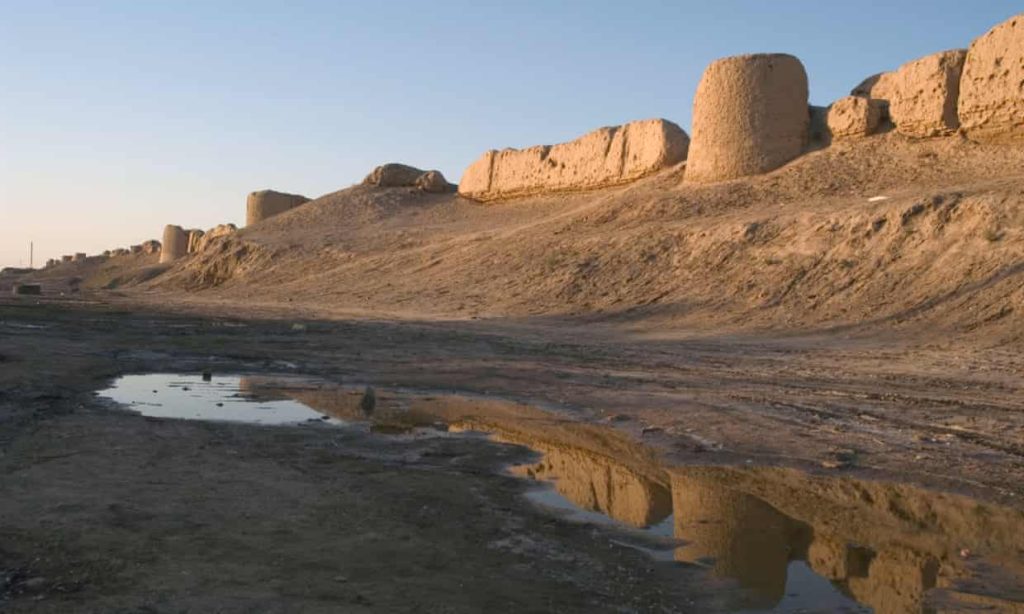
This level of fear is difficult to imagine. As we sit in our comfortable, well furnished homes, and our nice new iPhones and brand new pickup trucks. It seems so far away. Like that war that American are fight for off in west-bumfuck-istan. Something you read about, but don’t really get too concerned about.
The closest thing that approaches this level of fear is a full-scale global thermonuclear war with hyper-velocity MIRV’s targeting the cities within driving distance from your home.
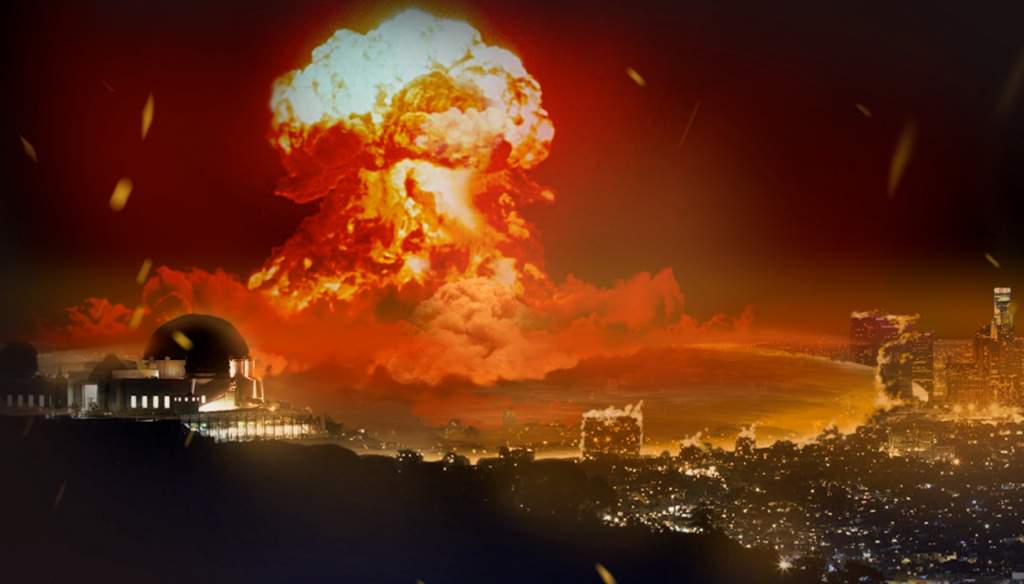
Americans need to wake up to what REAL fear is like before it is too late.
On a personal level…
There have been many, many sad events associated with invasion, war and conflict. Let’s not forget that everything is on a personal level.
War is deeply personal.
It is on a visceral level, where once the society collapses, the military fails, and the rulers flee, it is the individual families that must confront their new fates.
Imagine that the menfolk are off in the local militia fighting off the Mongol horde. The ladies are at the farm. It’s quiet. The rooster is starting to crow, and then suddenly…
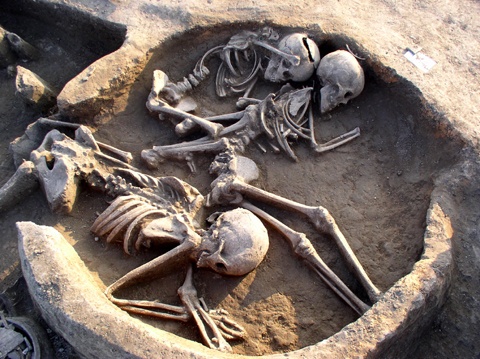
About this picture…
It’s just a small story besides great catastrophes and tragedies, but the most memorable thing I have ever learned about is the small family that burned in their own oven while - probably - were trying to hide from Mongol invaders. Their village - which was destroyed and burned - was dated to be from the 13. century which is the time of the Mongol invasion (1241–42 in Hungary). Most people could probably escape their settlement as archaeologist only found one other body in a ditch, but they were not that lucky. In the burned house they found an 8–10 years old girl, a 10–11 years old boy, and a 20–30 years old young woman in the oven of the house. Someone probably ignited their house and as they couldn’t escape they hid in the oven in desperation. They died with their hand protecting their face, probably from the smoke, the boy was holding onto a kitchen tool which he perhaps wanted to use earlier to protect themselves. -Quora
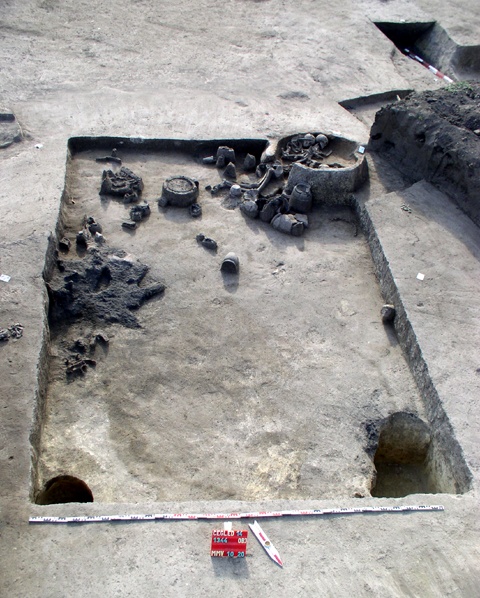
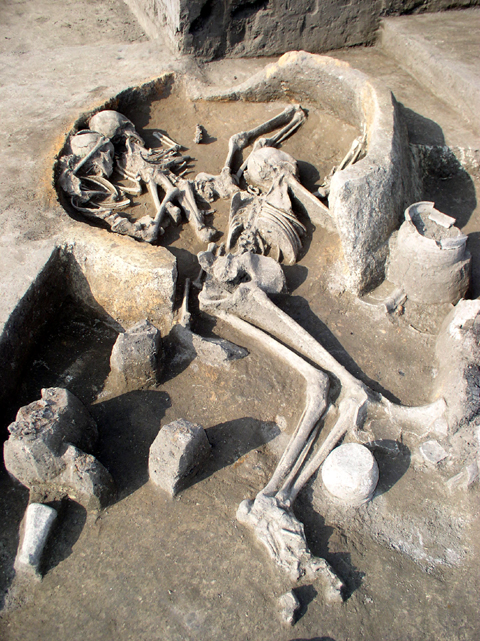
They used strategy, always doing something new and unexpected.
A single battle can be the turning point in a war, partly due to this psychological warfare.
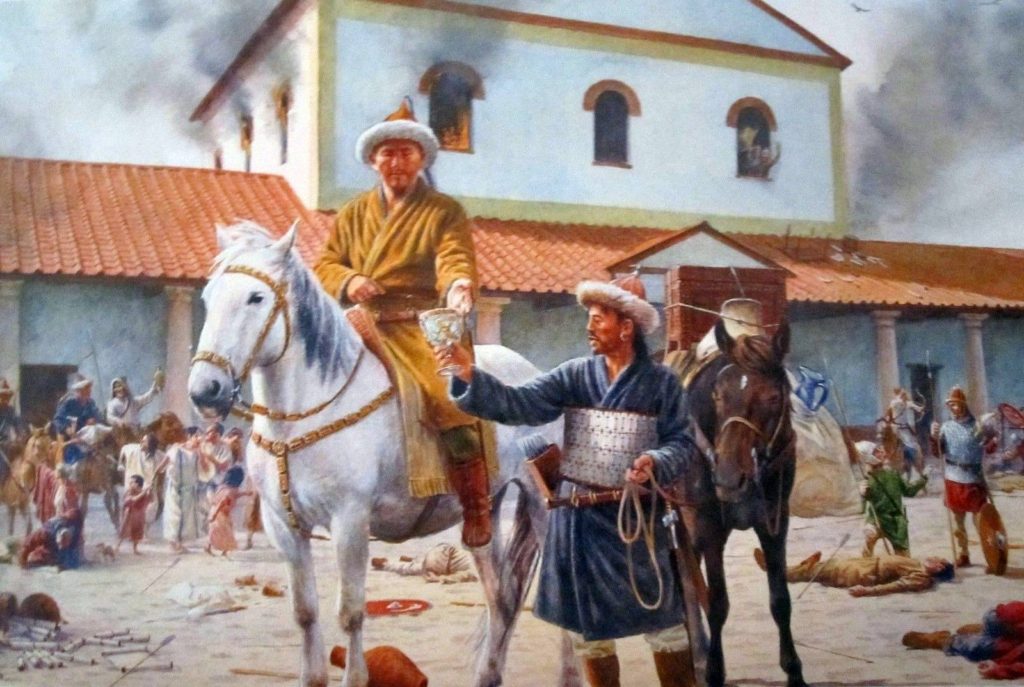
In the Batlle of Legnica the Mongolians are estimated to have been fighting a force twice its size with a variety of soldiers, including the famed Knights Templar.
A European coalition formed to try and stop the Mongols from entering Europe. The safety of Europe depended on this battle. Partway through the battle the Mongolian forces and began to retreat, and Polish forces charged in, reserves were also sent in to capitalize on this opportunity.
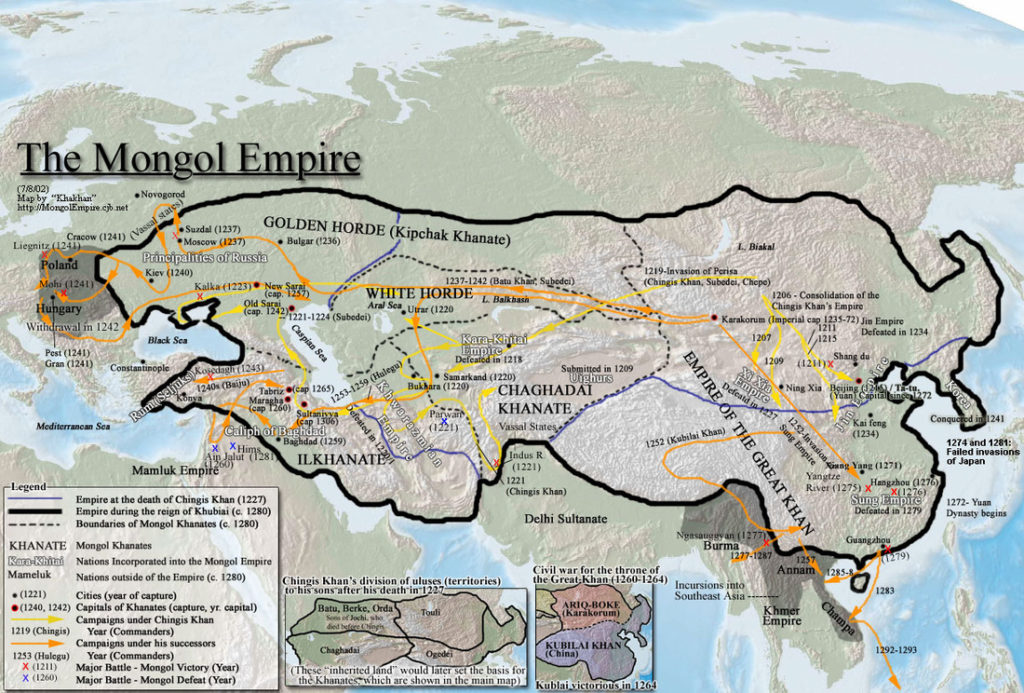
Little did they know, they had fallen for one of Genghis Khan’s most famous tactics, the feigned retreat. The Mongols used feigned retreats to separate the knights from the European infantry, and fight them separately.
As a result the Polish forces were decimated.
Dead horses, men and blood were everywhere. The survivors fled. Leading vast areas of Poland undefended.
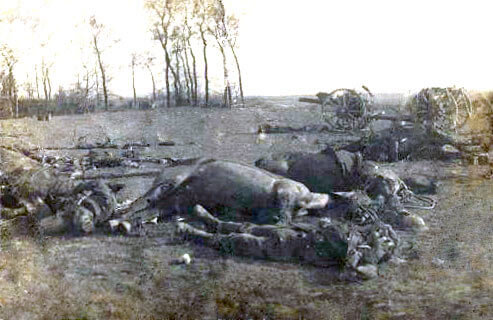
The people outside of the cities, in the small towns and villages, often unaware of what was going on, were often surprised by local raiding parties of Mongols. The raids would happen unexpectedly and were often quite brutal and nasty.
They were often killed, or burned alive in their homes.
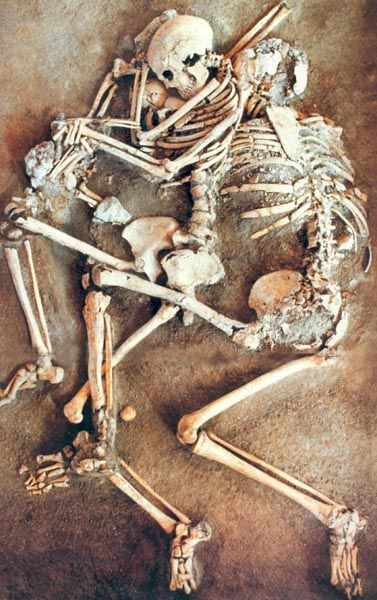
The Mongols Lied, and failed to keep agreements.
And, aside from that, they also were terrible at keeping promises…
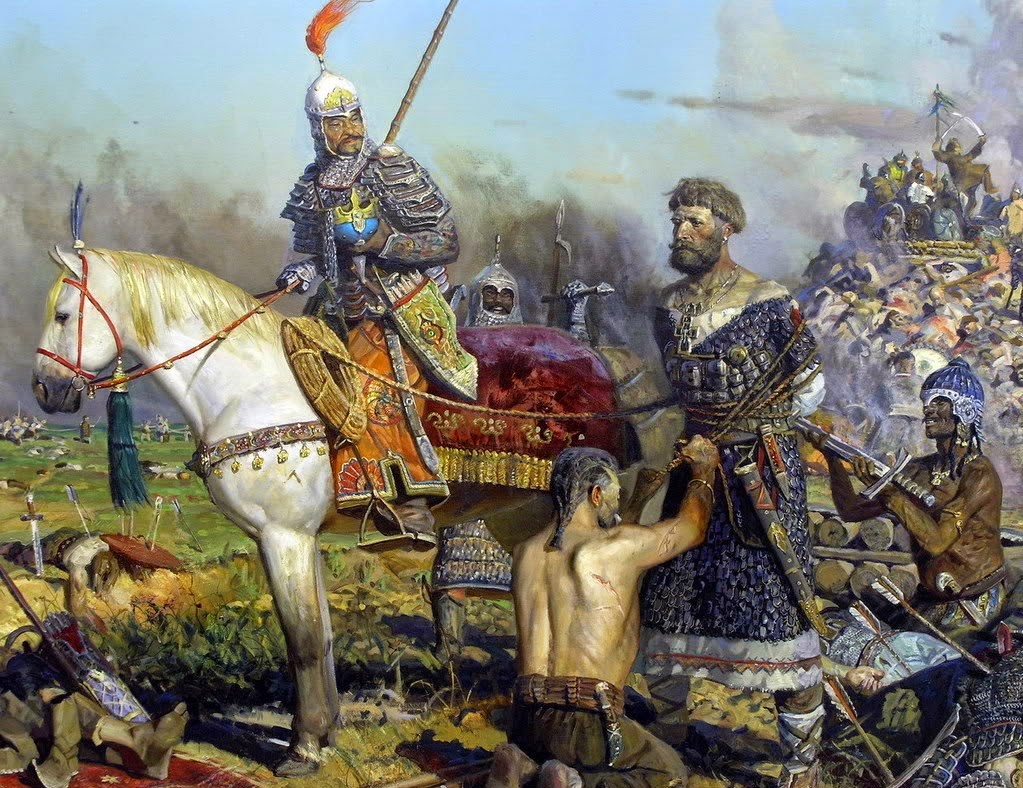
Subutai led an army of 20,000 Mongols against a Russian army 4 times its size. The Mongol rear guard was defeated early in the battle, and so the rest of the horde was forced to retreat. Mstislav the Bold chased down the retreating Mongols with victory in his eyes. His army spread out as they attempted to catch them, a chase which lasted many days. Mstislav spotted Mongols in formation along the Kalka River, and attacked without waiting for reinforcements. With his army in disarray, Mstislav was forced to retreat back to a fortified camp. He had fallen for a feigned retreat. Mstislave surrendered to Subutai with the agreement that neither he, nor any of his men would be harmed. They were all slaughtered upon leaving the camp. Luckily, Mstislav managed to escape. Mstislav the Bold, boldly ran away. -ESKify
Entire communities were wiped off the face of the Earth. Their leadership, grown fat, complaisant and happy over the decades of a life of leisure, were not at all equipped to deal with fierce, aggressive humans.
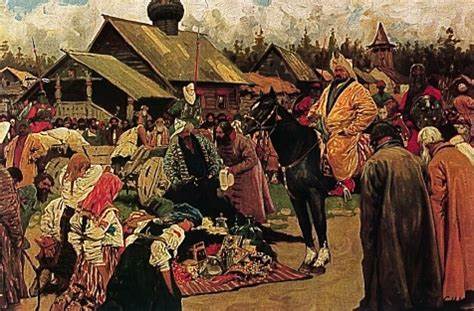
Consider Hungary.
This was one of the most devastating battles in European history. 25% of Hungary’s population was wiped out by after the Mongol incursions. Half of all liveable places had crumbled, smashed to bits by hordes of Mongols. Losses were heavy on both sides, but the Europeans suffered most. This was the most major battle of the war between Hungary and the Mongolians. -ESKify
Lets look at what happened to some of the various cities that decided to stand up and defy the Mongol armies.
Kaifeng, 1232-33.
Kaifeng was the capital city of the Jurchen Jin dynasty of northern China.
Mongol Siege of Kaifeng, (1232–33). A Mongol army commanded by Subedei captured the northern Chinese Jin dynasty capital, Kaifeng, overcoming defenders equipped with gunpowder bombs. The Jin emperor committed suicide, handing control of Jin territories in northern China to the recently elected Mongol khan, Ogödei. - Mongol Siege of Kaifeng | Summary | Britannica
At the time of the Mongol siege of Kaifeng, China was roughly divided between three empires, the Xi Xia, the Jurchen Jin, and the Song.
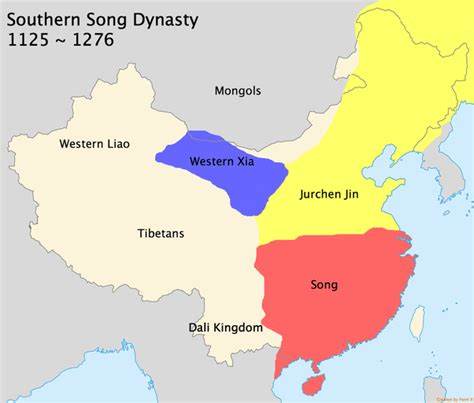
The Jurchen Jin were the predecessors of the Manchus in northern China and they had been at war with the Mongols for about 20 years before Kaifeng actually became a target of Mongol ambitions.
One of the first major cities to be attacked by Mongol armies, Kaifeng was also one of the longest-lasting sieges, as its garrisons used firebombs, gunpowder, and the resources of the entire Jurchen Jin empire to fend off the assault.
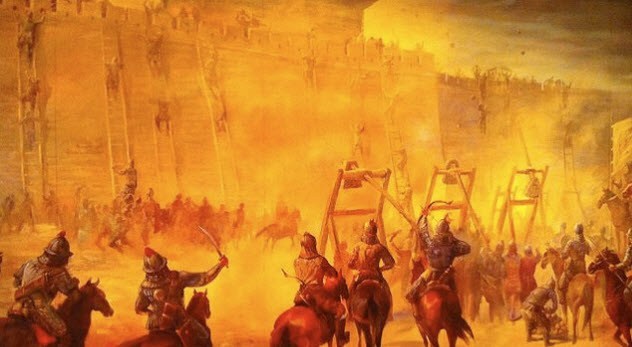
The Mongols had learned well from their Chinese prisoners how to conduct sieges.
They built a 54-mile-long wooden wall of contravallation to hem in Kaifeng’s one million frightened inhabitants.
Contravallation definition, a more or less continuous chain of redoubts and breastworks raised by besiegers outside the line of circumvallation of a besieged place to protect the besiegers from attacks from the outside, as by a relieving force. - Contravallation | Definition of Contravallation
In addition to the almost 150,000 Mongols conducting the siege, the Song sent 300,000 troops to help finish off their Jin enemies. For six days, the Mongol and Song armies assaulted Kaifeng’s wall but took thousands of casualties from a dreaded weapon called a ho pao, a long bamboo tube filled with incendiaries that could be lit with a fuse or thrown into siege engines from holes in the walls to explode with such force that it left craters in the ground and burned everyone in the immediate vicinity.
Thousands of Mongol and Song Chinese troops died in assaults against Kaifeng’s stout walls.
It was clear to Subedei that a long siege was needed to reduce the Jin capital. Plague soon broke out in Kaifeng, and Subedei withdrew his forces to let the disease destroy his enemies while the Mongol and Song armies remained plague-free.
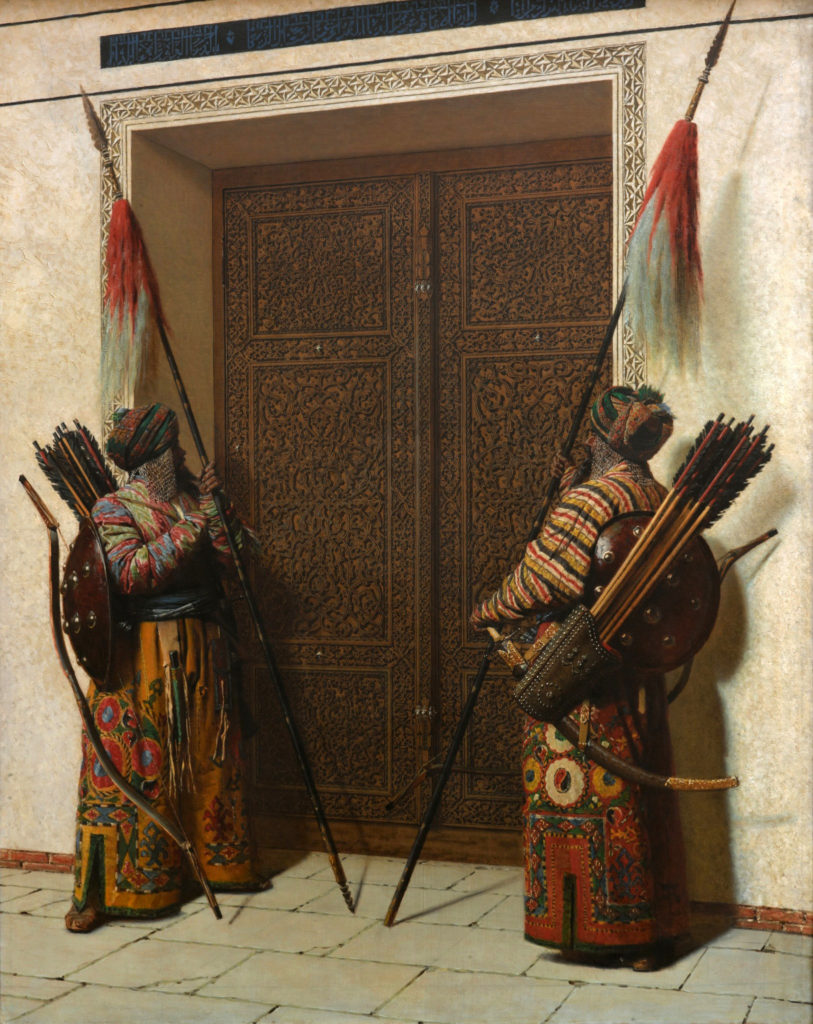
Within a month, the Jin emperor committed suicide. Soon afterwards the Mongol and Song armies broke into Kaifeng and began massacring the population.
Ogedei ordered the massacre to be stopped and aid brought to the suffering people. Subedei wanted to massacre the entire Jin population and turn the farmland into grazing fields for Mongol horses, but Ogedei overruled him.
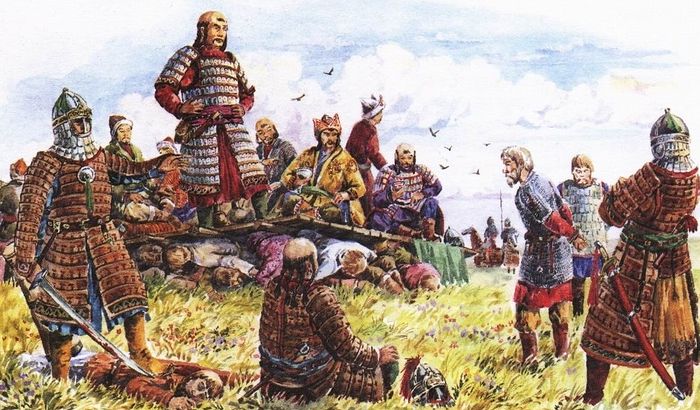
Ogedei’s Chinese advisers had convinced him that the Jin population would provide lucrative taxes, craftsmen, and soldiers for future Mongol conquests. The Jin held out until 1234 before being overwhelmed by the combined Mongol and Song forces, ending the Jin dynasty forever.
XiXia, the capital of Zhongxing
The Xi Xia capital of Zhongxing presented a new problem for the Mongols, who had little experience in siege warfare. In an earlier siege of the walled city of Volohai, the Mongols had attempted a series of suicidal assaults with scaling ladders that failed, and they suffered heavy casualties in the fighting. Genghis offered to lift the siege of the city provided the residents gave the Mongols 1,000 cats and 10,000 swallows in cages. The puzzled citizens of Volohai quickly granted the request—and just as quickly lived to regret it when the animals fled back into the city with tufts of flaming wool tied to each of them by the Mongols. Soon, the whole city was ablaze. While the defenders were occupied with putting out the fire, the Mongols scaled the now undefended walls and massacred the inhabitants. Genghis did not want to face a similar costly assault of the walls of Zhongxing. Instead, he decided to break the dikes on the Huang River and flood the city below. The plan backfired, however, when the Mongol camp itself was flooded and hundreds of troops were swept away by the raging waters. To make matters worse, the move left two feet of standing water for miles around the city, in effect creating a ready-made moat. The Mongols retreated into the surrounding hills but returned in force in 1210. Xi Xia Emperor Li Anquan, not wishing to face another siege, agreed to give his daughter Chaka to Genghis Khan as a wife and to pay tribute to the Mongols as a vassal state. Genghis demanded and received another 1,000 young men and women, 3,000 horses, and vast quantities of gold, jewelry, and silk. The Xi Xia later rebelled in 1218 and 1223 because they tired of providing the Mongols with so many men to fight in their wars of conquest, but these rebellions were brutally put down. -Warfare History Network
Hangzhou (Lin’an), 1276.
Lin’an, or Hangzhou, was the capital city of the Song dynasty, which ruled over the much wealthier, much more powerful southern part of China.
The siege lasted five years, but a full blockade was not won for three. After the city's surrender in 1273, the Song court was in disarray and decided to send out a force of 130,000 men to meet the Mongols, but lost decisively. The Mongols took Hangzhou in 1276 and cleaned up Song loyalists in the next few years. - How did the mighty China lose to Mongols? : AskHistorians
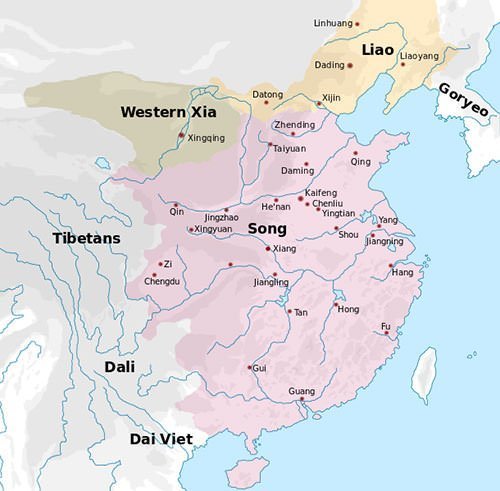
The long campaign to conquer all of China went through Song lands, and the Mongols had an incredibly tough time making their way to Hangzhou.
The capital city of the wealthiest polity in China, Lin’an was also one of the largest in the world and housed merchants (and their religious sites) from all over Asia.
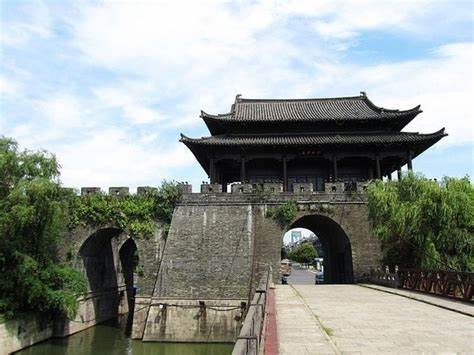
In this international city, Islam, Buddhism, Taoism, and Confucianism all competed for the hearts and minds (and money) of Hangzhou’s citizens.
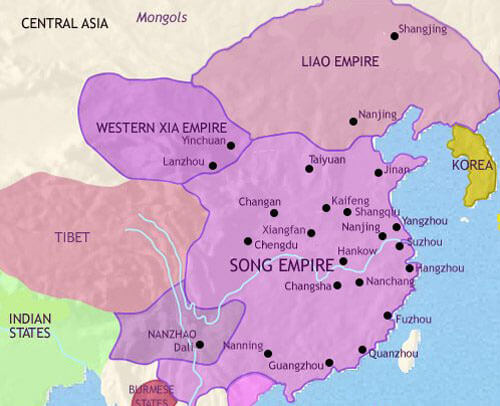
The city of Hangzhou refused an offer to surrender peacefully and the Mongols had to fight their way in.
The siege of Hangzhou is less famous than many of the Mongols’ other sieges, despite the splendor of Hangzhou, because the royal family, headed by a child and run by a widowed empress – gave up and surrendered rather quickly.
Of course, once it was occupied it was burned to the ground. As usual, the Mongols massacred the city’s inhabitants.
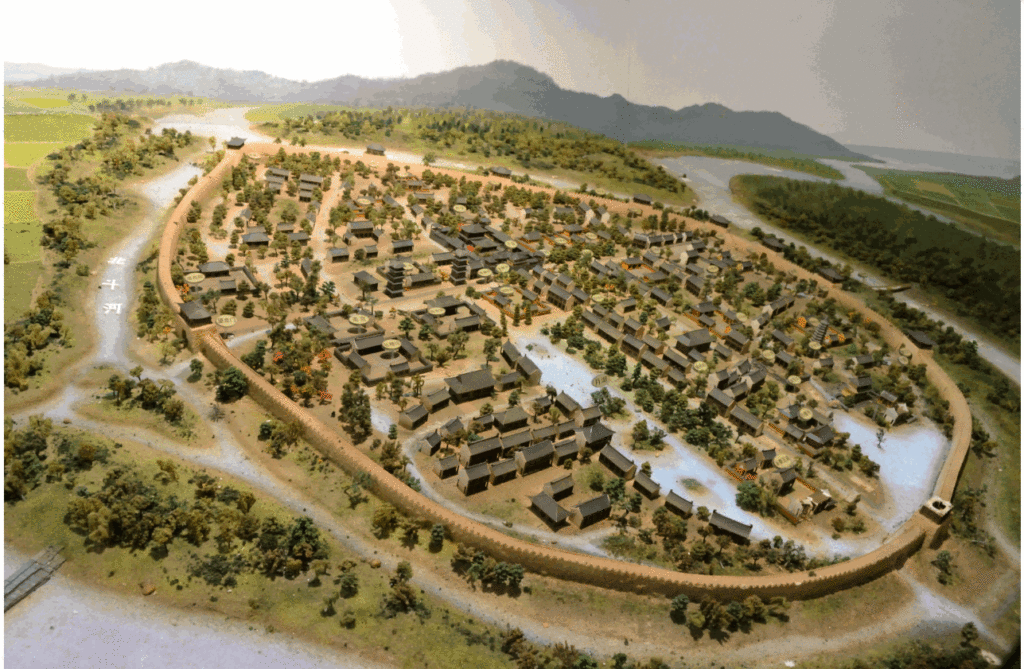
Xiangyang, 1267-73.
The Song dynasty was by far the most powerful enemy that the Mongols faced in their conquest of Eurasia. It was larger, wealthier, more populated, and had a better educated populace than any other polity in the world at the time.
Once the Mongol forces occupied Xiangyang, they could travel by ships down the Han river into the Yangtze river. After the Battle of Xiangyang, China could not enjoy the protection of natural barriers any more and so it collapsed in just a few years. - Battle of Xiangyang - Wikipedia
The siege of Xiangyang, which lasted six years, was actually a siege of the twin cities of Xiangyang and Fancheng, which were both heavily fortified and served as the gateway to Song lands.
In battle, a historian wrote, “the Mongols made the fullest use of the terror inspired by their physique, their ugliness, and their stench.” Mongols were narrow-waisted and small-footed, with big heads. They shaved their hair short on the backs and tops of their heads and left it long at the sides. Custom forbade them from ever washing their clothes. Also contributing to their smell might have been their diet, which at certain times of the year was mainly mare’s milk. On marches when there wasn’t time to milk, Mongol riders would open a vein in their horses’ necks and drink the blood, either straight or from a pouch. Mongols were especially fond of fermented mare’s milk, called kumis. Many Mongol nobles died young from drunkenness. After victories, Mongols sometimes celebrated by drinking kumis while sitting on benches made of planks tied to the backs of their prisoners. -The New Yorker
The Mongols had unsuccessfully laid siege to Xiangyang before, and gave up in order to conquer Russia and the entire Middle East instead.
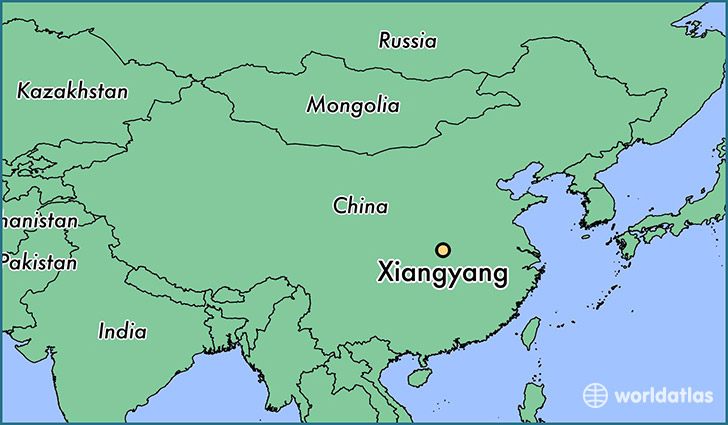
Mongol generals brought engineers from the Middle East to oversee the building and use of new trebuchets that eventually gave the invaders their victory over Xiangyang’s defenders.
With the fall of the twin cities, Mongols were free to overrun the rest of the Song dynasty’s territory. Most historians consider the sacking of Xiangyang to be the official end of the southern Song dynasty, and with it the cultural and economic power of old China.
Routing the Jin
In 1210, an emissary of the newly installed Jin emperor, Prince Wei, appeared before Genghis and demanded his submission and a tribute paid to the Jin.
An infuriated Genghis answered that it was the Jin who needed to pay tribute to him; he spat on the ground as a gesture of defiance. With his flank secured by the conquest of Xi Xia, Genghis was ready to attack the mighty Jin Dynasty.
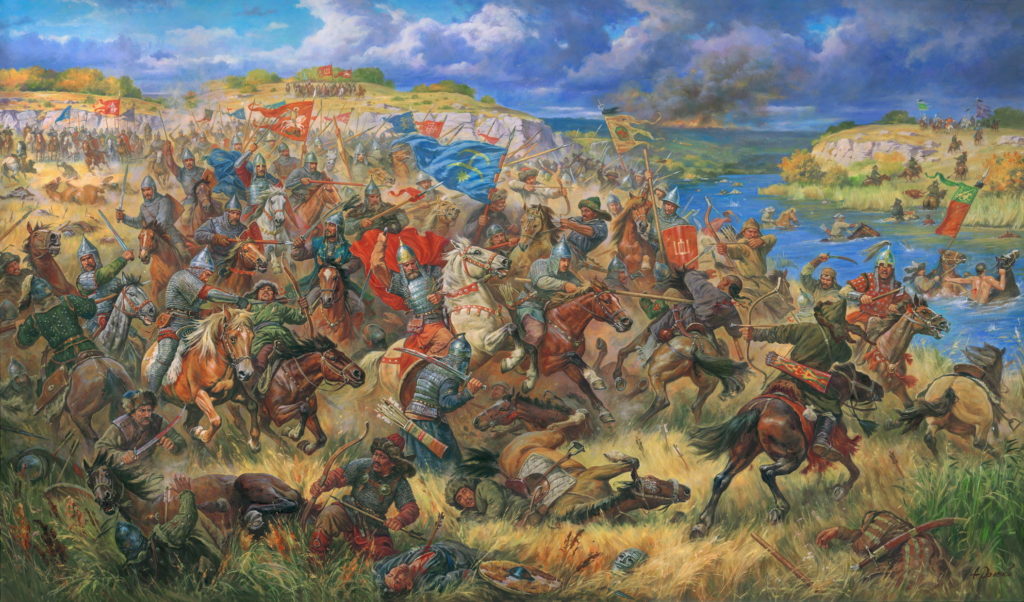
In 1211, 30,000 Mongol troops under Genghis’s greatest general, Subedei, assaulted the Great Wall. The Mongols brought up groups of archers who cleared an area of wall while other Mongols scaled the wall with ladders and took possession of sections of it. The Jin rushed in reinforcements and recaptured the lost sections of the Great Wall. Thousands died on both sides as the fighting continued back and forth for several days.
The Jin brought most of their army to back up the forces defending the Great Wall. What the Jin didn’t know was that Subedei’s attack was merely a diversion.
Some 200 miles to the west, Genghis and a force of 90,000 Mongols were crossing the Great Wall at its end in the Gobi Desert. The Onguts, a tribe similar to the Mongols, were supposed to be guarding the western end of the Great Wall for the Chin, but they defected to Genghis and allowed the Mongols to cross into China unmolested.
After Genghis’s cavalry poured into China, Subedei’s force broke off its attack and crossed over into China from the end of the Great Wall as well.
The Jin forces were now out of position and moved to cut off the Mongols from Beijing. Genghis’s cavalry caught close to 200,000 Jin troops on open ground near Badger Pass, where the Jin hoped to block the Mongols from advancing any farther.
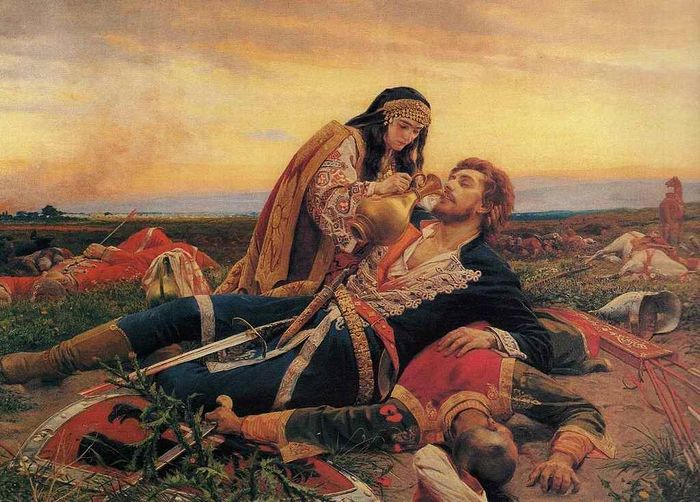
The Jin formed for battle with the pike phalanxes and crossbowmen in the middle and armored heavy cavalry on the flanks. The outnumbered Mongol heavy cavalry engaged in a hotly contested battle on the flanks with the Jin cavalry as the densely packed Jin phalanxes and their crossbowmen held off the Mongol horse archers.
Suddenly, Subedei’s remaining 27,000 Mongols (3,000 had died at the Great Wall) showed up on the battlefield on the flanks and rear of the Jin army. The rout was on.
After the Jin cavalry was defeated, the Jin pikemen, half of whom were militia conscripts, broke and ran. They were cut down by the Mongol cavalry or trampled by their own terrified horsemen.
Bodies stacked “like rotten logs” littered the ground for more than 30 miles. Genghis then separated his army into three forces that burned, pillaged, raped, and murdered the populations of 90 cities over the next six months.
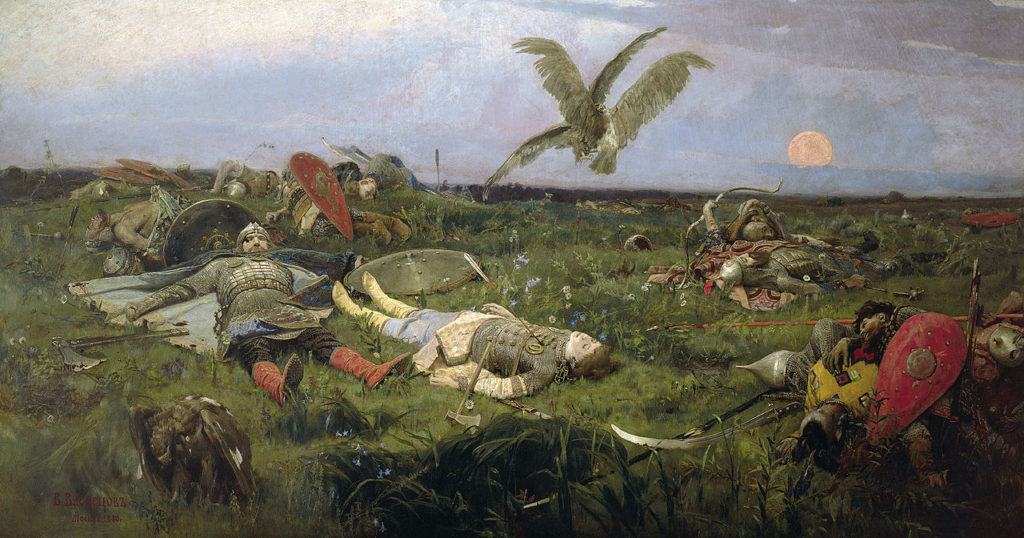
Despite the awful destruction, the Jin would not surrender. Genghis became frustrated by the enormous size and scope of a nation-state like the Jin.
He entered into negotiations with the emperor and agreed not to attack any more cities. The Mongols had already captured well over 100,000 Chinese prisoners; to make a negotiating point, Genghis had them executed.
Beijing
In response to the losses due to the invasion by Genghis Khan, the Jin moved their capital farther south, from Beijing to Kaifeng, and began rebuilding their armies.
Genghis was angered by the move, which he considered a betrayal of trust, and looked for an opportunity to attack the Jin again.
In the spring of 1213, the Jin attacked the Mongol-allied Khitan tribe in Manchuria.
Genghis came to the aid of his Khitan allies and attacked the Jin armies in Manchuria, which fell back to their fortifications at Nankuo Pass.
The Mongols were blocked from attacking Beijing by the well-fortified Jin positions at the pass and by the eastern sections of the Great Wall. The Mongols headed into the pass and then retreated. It was all a ruse.
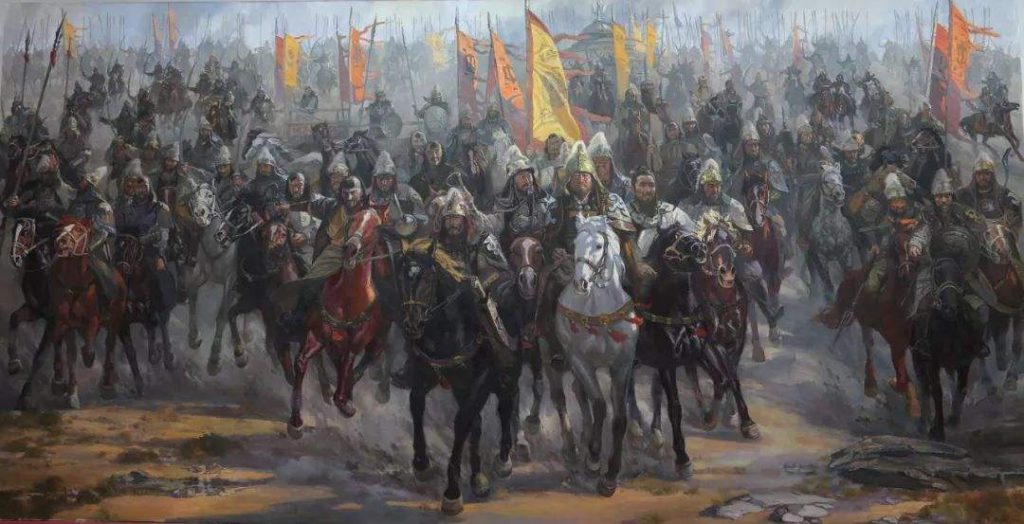
The Jin forces hurried to trap the fleeing Mongols, recklessly leaving their fortified positions to pursue them.
The Mongols led the Jin forces into their own trap and destroyed most of the Jin army.
Those Jin troops that had not pursued the Mongols fled their fortified positions and retreated to the Great Wall, with the Mongols in hot pursuit.
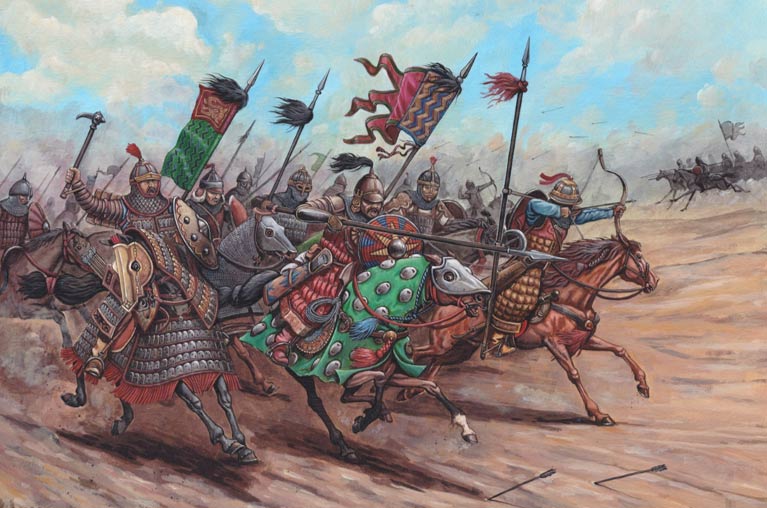
During the 13th century, the Mongol Empire was established by Genghis Khan. To signify his position as the supreme ruler of the Mongols, Genghis Khan assumed the title ‘Khagan’, which may be translated to mean ‘Great Khan’. The successors of Genghis Khan continued to use the title ‘Khagan’, though it was not long before the empire began to fragment.
The Mongols caught and destroyed the remaining Jin troops as they tried frantically to retreat through the Great Wall. The Mongols then passed through the open gates of the Great Wall.
The Mongols began besieging the more than one million residents of Beijing. Beijing was a tough nut to crack, with walls and moats that extended more than nine miles around the city, and was watched over by 900 towers.
The city’s defenders had double and triple crossbow ballistae and trebuchet catapults that fired clay pots filled with naphtha-like incendiaries that exploded and set on fire whatever they hit.
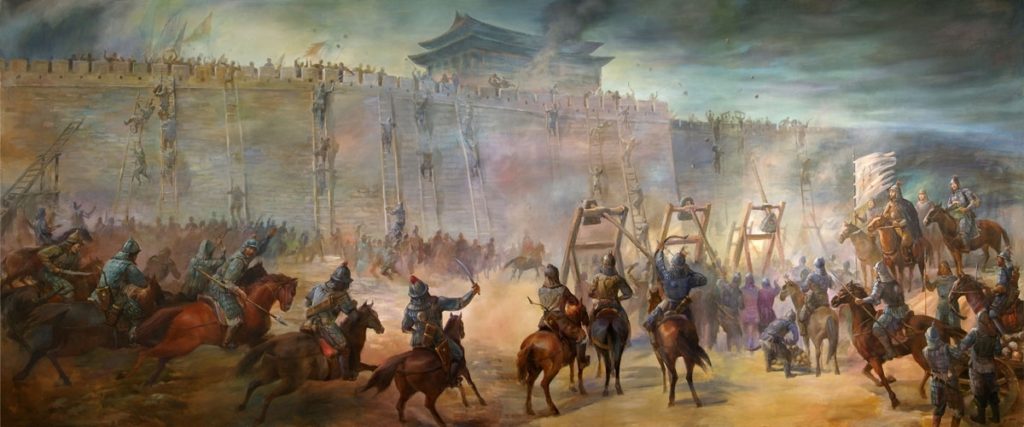
The Jin also introduced one of the first poison gas weapons in history, firing projectiles bound in wax and paper of 70 pounds of dried human waste, ground-up poisonous herbs, roots, and beetles packed in gunpowder.
The projectiles were lit with a fuse and fired from a trebuchet, creating a deadly cloud of toxic fumes that killed or disabled anyone unfortunate enough to breathe in the poisonous dust.
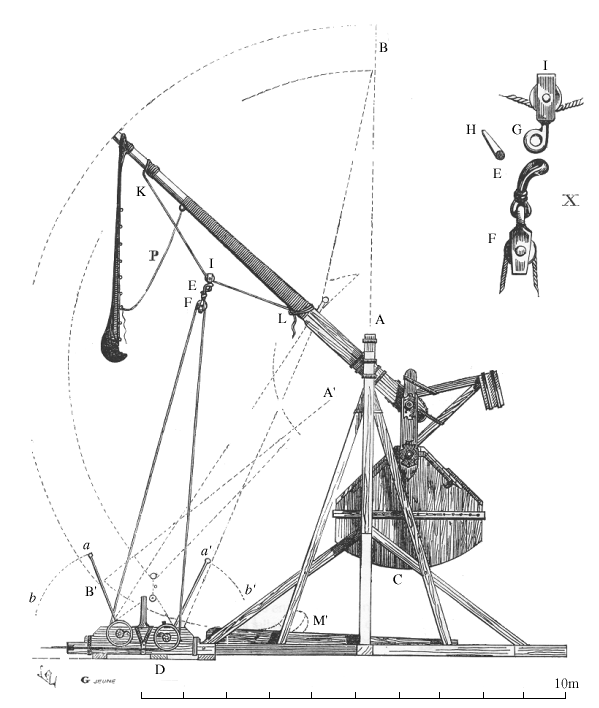
The Jin also had clay-pot firebombs filled with incendiaries to throw from the walls and hot oil to pour down on attackers.
The Mongols launched attacks against the walls with ladders, but lost dozens of men to the incendiaries and the hot oil.
The Mongols then forced Jin prisoners to build and push forward siege engines and serve as human shields for the attackers. Jin soldiers would recognize family and friends among the captives and hold their fire.
Many Jin prisoners were killed from missed crossbow fire aimed at the Mongols and from the bombs used to burn down the siege engines before they could get into the city.
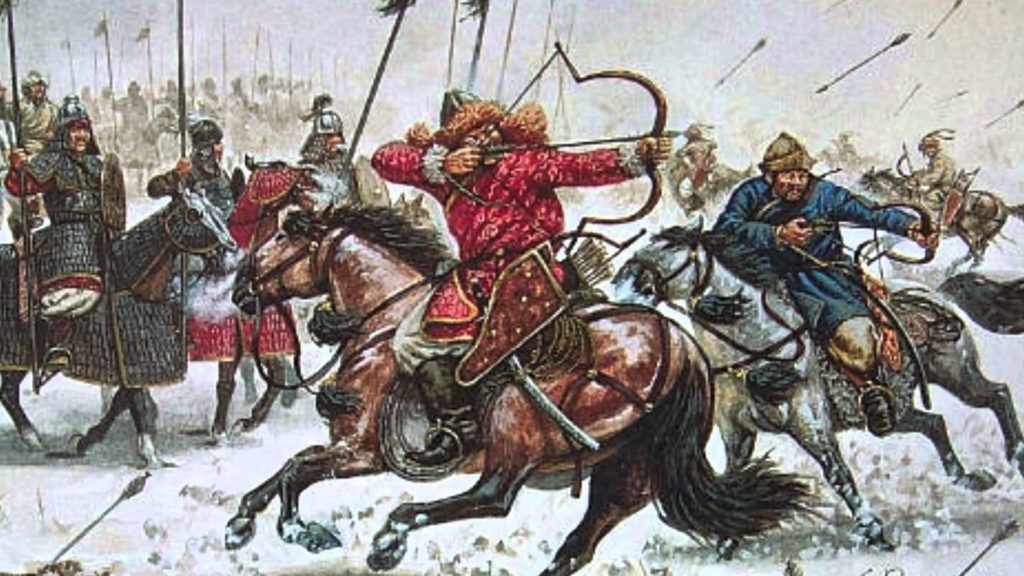
The Mongols and their Chinese human shields dug trenches covered by cowhide up to the walls to undermine them, but the Jin dropped firebombs from chains onto the trenches that exploded with such force that they left only smoldering craters and no intact human remains.
The siege dragged on for a year as starvation and disease began killing people on both sides of the walls, but the defenders, with more than a million people to feed, had the worst of it.
Two Jin relief columns loaded down with food were intercepted by the Mongols, and some defenders in Beijing turned to cannibalism to survive.
In June 1215, the Jin commander escaped to Kaifeng, where he was executed by the emperor for leaving his post.
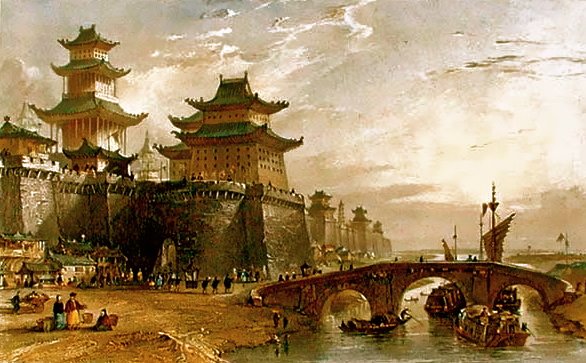
The desperate people of Beijing then opened the gates of the city to the Mongols, who ransacked the city and massacred thousands in revenge for their ordeal. The city was set on fire. Thousands of girls ran to the city’s steepest walls and threw themselves to their deaths to escape the flames and the unwanted amorous attention of the Mongols.
A year later, the ambassador of Khwarezm described seeing mountains of bones inside and outside of what had been the greatest city in the world.
Moscow, 1382.
By 1382, Mongol power in Russia had waned considerably.
So much so, in fact, that Moscow’s rulers felt confident enough to challenge the authority of the Golden Horde on the field of battle.
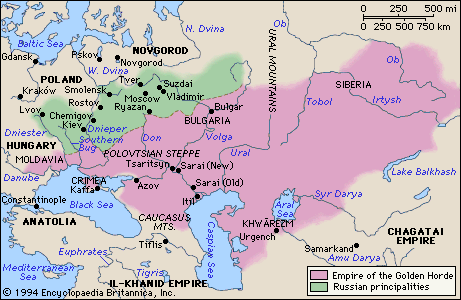
After a string of light victories against Mongol cavalry earlier in the year, the Mongols showed up with a large force on the doorstep of Moscow, promising to spare its inhabitants if it surrendered.
The poor fools in Moscow believed the Mongols, and 24,000 people were slaughtered as the Mongols sacked the city once again.
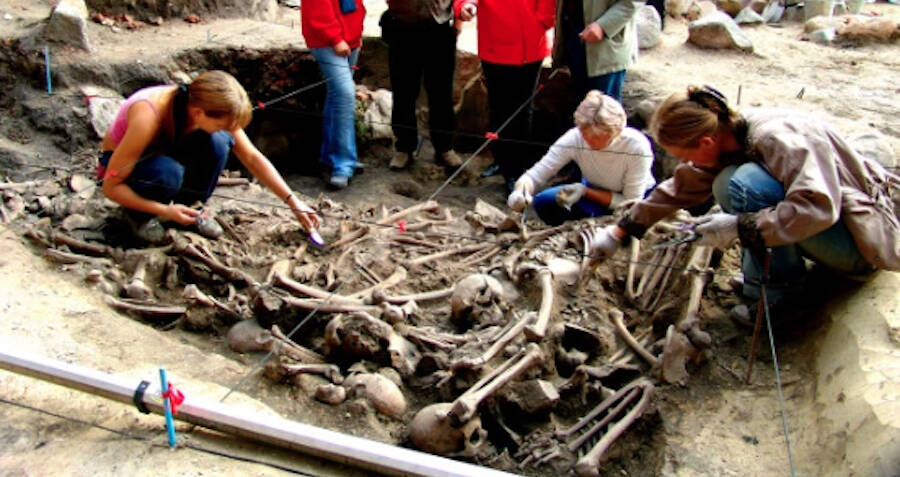
The siege of Moscow (one of many) reasserted Mongol control over Russia for nearly 100 more years before the Russians were finally able throw off the infamous yoke of the Golden Horde.
When the Mongols invaded the Russian town of Yaroslavl in 1238, almost nobody was spared. Hundreds were slaughtered brutally and dumped into mass graves as the town was completely sacked. Nearly 800 years later, researchers have given us a chilling glimpse of the victims left behind. After the slaughter, Mongol raiders buried the dead in pits by the dozens with no markers to distinguish who these poor victims even were, wrote LiveScience. But one pit of the dead in particular stood out after scientists of the Moscow Institute of Physics and Technology began genetically analyzing three of its 15 corpses. Researchers found that the three murdered townsfolk buried together in the dirt were a woman, her daughter, and her grandson. Moscow’s research team found that the eldest of the three corpses was at least 55 years old before she died. Her daughter was between 30 and 40, while her grandson was younger than 20. They were buried in one of nine pits found at Yaroslavl, which altogether held more than 300 bodies. - Researchers Uncover Horrors Of Russian ‘City Drowned In Blood’ By The Mongols In 1238
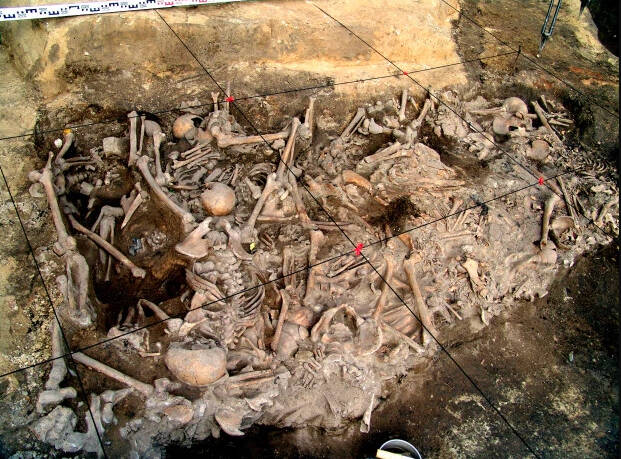
As for Yaroslavl as a whole, Mongols led by Genghis Khan’s grandson Batu Khan destroyed the town not long after advancing into Russia. Nonetheless, enough buildings and artifacts survived to tell us a little something about the area, namely that it was a wealthy one. Scientists determined this by noting the tooth decay present in the three bodies in question and noting that the honey and sugar that could cause this were only available to those with substantial means at the time. Beyond the three generations of one family left slaughtered in a pit, the scene at Yaroslavl showed just how brutal its conquest was. Batu Khan invaded towns like Yaroslavl with utter indifference, ultimately taking more than a dozen places in present-day Russia. In just five years, he wiped out seven percent of Russia’s population. When the Russian Grand Prince refused to submit to the Mongols, Genghis Khan’s grandson simply burned the capital city to the ground — with the royal family and every inhabitant inside. - Researchers Uncover Horrors Of Russian ‘City Drowned In Blood’ By The Mongols In 1238

The brutality that has made the conquest of Yaroslavl unforgettable for many Russians was certainly on display in the way the victims’ bodies were treated after death. Prior analysis suggested that the three family members, for example, were buried in February 1238. But recent evidence in the form of preserved maggots in their remains indicated otherwise. In fact, new evidence shows that the bodies were probably decomposing in the open air for months before they were buried. “These people were killed, and their bodies remained lying in the snow for a fairly long time,” Engovatova said. “In April or May, flies started to multiply on the remains, and in late May or early June, they were buried in a pit on the homestead, which is where they probably had lived.” Fittingly, Engovatova described Yaroslavl after the attack as a “city drowned in blood.” The skeletons of the three family members as well as the remains of the other victims — including punctured, broken, and burned bones in the hundreds of buried bodies — certainly suggest that to be true. - Researchers Uncover Horrors Of Russian ‘City Drowned In Blood’ By The Mongols In 1238
Kiev, 1240.
There is a convincing argument to be made that during the medieval era in Europe, the Slavic world’s cultural, political, and economic epicenter was Kiev rather than Moscow or Warsaw.
The Mongols had so many oxen and cattle that they were able to carry all kinds of stuff with them—entire houses, and even temples—on giant carts. Observers said the number of Mongol horses was beyond counting, every warrior possessing many remounts. Mongols spent so much time on horseback that they grew up bowlegged. If a Mongol had to move any distance farther than a hundred paces, he jumped on a horse and rode. A contemporary Russian annal describes the Mongol army approaching the walls of Kiev: “The rattling of their innumerable carts, the bellowing of camels and cattle, the neighing of horses, and the wild battle-cry, were so overwhelming as to render inaudible the conversation of the people inside the city.” Of necessity, the Mongols did most of their conquering and plundering during the warmer seasons, when there was sufficient grass for their herds. -The New Yorker
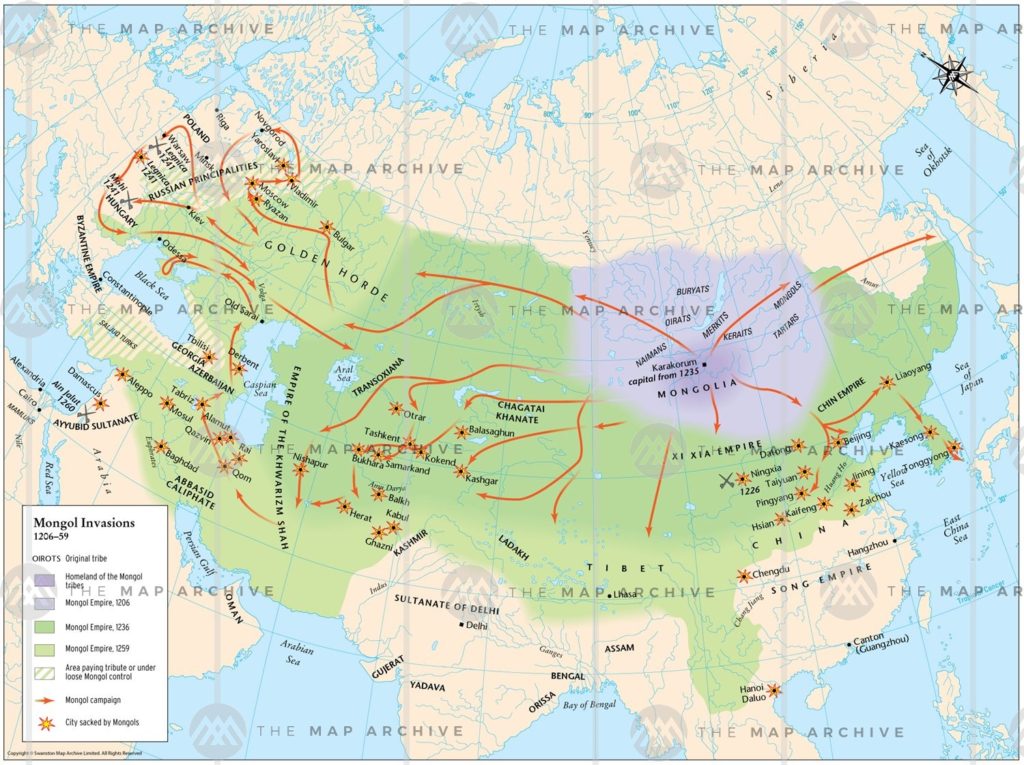
When the Mongols invaded Europe and plundered Kiev in 1240, the collapse of Kiev indeed proved crucial to the invading army’s success in pillaging Europe’s surprisingly defenseless countryside.
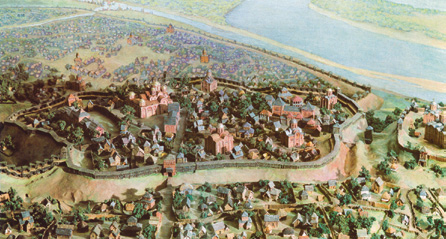
Unlike China, which had a densely populated countryside and a few well-fortified cities, or the Middle East, which had virtually no countryside and many well-fortified urban areas, Europe was comparatively rural, or semi-rural .
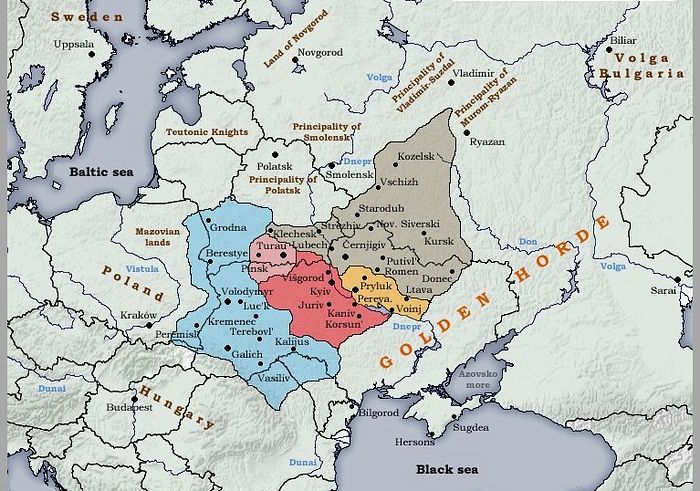
This meant that small urban areas like Kiev fell easily to the Mongol hordes, but it also made it harder for Mongol administrators to govern and tougher for the Mongol military to plunder, siege, and demoralize the populace.
None of this stopped the Mongols from wreaking havoc on eastern Europe, of course, but it does help to explain, in part, why khanates in Europe did not share the successes of their contemporaries in the Middle East, western India, and China.
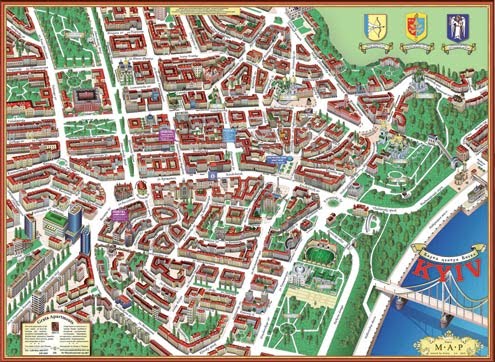
Oh, by the way, the Mongols slaughtered 48,000 of the 50,000 people living in Kiev when the city’s defenses collapsed.
Baghdad, 1258.
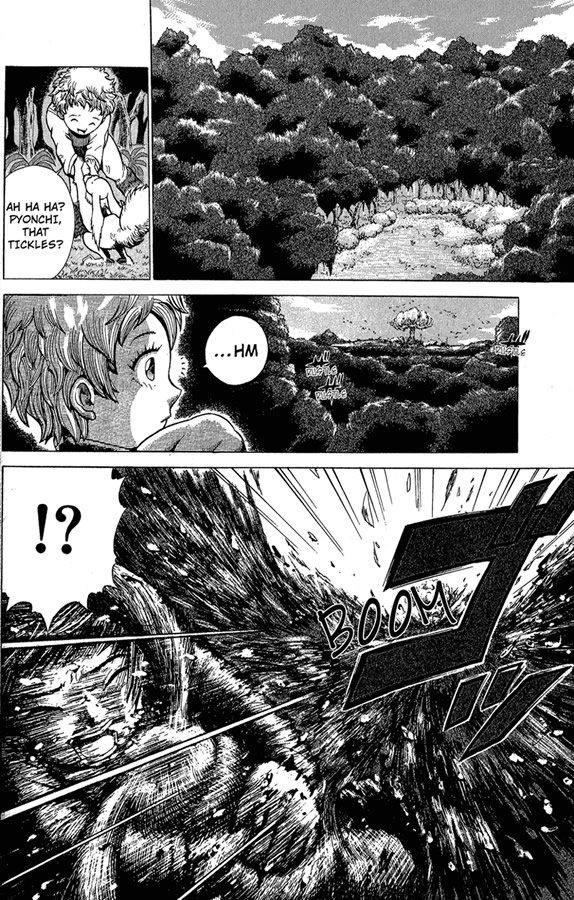
The fall of Baghdad was in a class of it’s own.
(General) Tamerlane’s thing was building pyramids out of heads. When his forces took Baghdad, he spared almost no one, and ordered that each of his ninety thousand soldiers bring him a head (some sources say two) or lose his own life. The thousands of heads were piled into towers. Tamerlane also said not to destroy hospitals and mosques, a small concession by a Muslim to the former capital of his faith. Nonetheless, thanks to him and to Hulagu, almost no architecture from the golden days of Harun al-Rashid has survived. Baghdad would not be a city of any consequence for another five hundred years, until its strategic location and Iraq’s oil attracted the attention of world powers. Many Muslims believe that the Mongol destruction of Baghdad and of the caliphate was the worst misfortune ever to befall Islam. With it, the faith’s first period of flowering came to a decisive close (though its actual decline had, of course, begun earlier). Historical speculations about what might have been if the disaster had never occurred go in various directions, some tending toward the wild. A book on Arab cultural identity published in the nineteen-fifties quoted a high official in the Syrian government who said that if the Mongols hadn’t destroyed the libraries of Baghdad, Arab science would have produced the atom bomb long before the West. Recently, when TV stations everywhere were replaying the video of a U.S. marine shooting a wounded prisoner in a mosque in Falluja, a newspaper story about Arab reaction to the incident said that a retired army officer in Cairo said that the Americans were “acting like Genghis Khan.” He had the wrong Mongol, but his drift was ancient and familiar. -The New Yorker
Baghdad was the technological, cultural, and societal center of the civilized world.
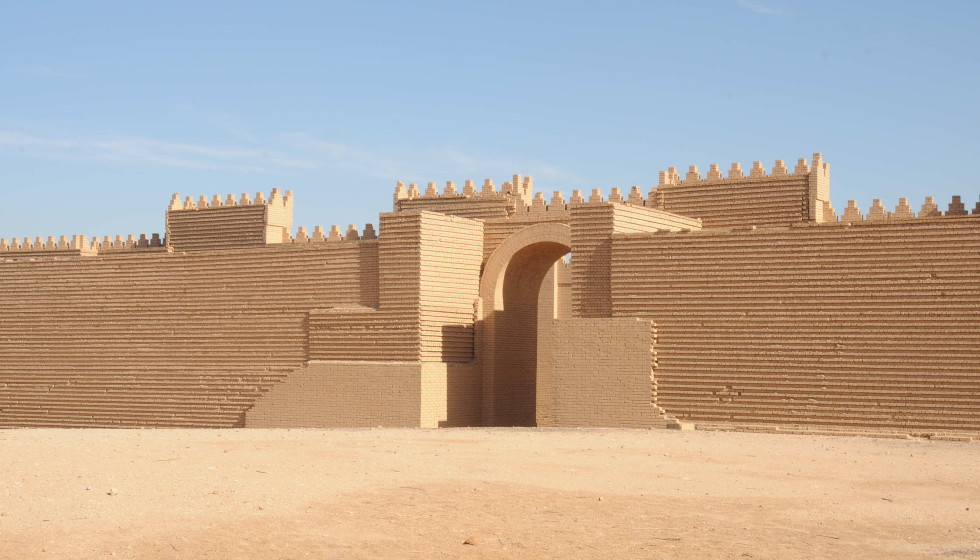
As happens with most golden eras, Baghdad’s quickly ended. A century after Harun al-Rashid, the city’s influence and glory had declined. Political changes made the caliph less powerful, limiting his temporal domain to Baghdad and nearest regions, though Sunni Muslims in other places still accepted his spiritual authority. The city remained a center of wealth and commerce, and an imposing sight architecturally. A Spanish pilgrim, Ibn Jubayr, who visited Baghdad in 1184, wrote, “The Tigris . . . runs between its eastern and its western parts . . . like a string of pearls between two breasts.” He noted the beauty of the caliph’s palace reflected in the water. Caliph Mustasim, the thirty-seventh in the Abbassid line, who became caliph in 1242, had confidence that his house would reign until Resurrection Day. Rumors of the approach of the Mongol army in 1257 did not worry him. During the reign of his father, the armies of the caliph had been among a very few opponents to defeat and turn back the Mongols. From deep in Mongolia (General) Hulagu set out in 1253, marching westward at the head of a large force that included siege-engine experts of several nationalities. His trebuchets could hurl huge rocks, and smaller stones covered in flaming naphtha, and his arbalesters could shoot bolts dipped in burning pitch a distance of twenty-five hundred paces. Hulagu’s brother Mongke Khan told him to subdue the people he encountered as he continued all the way to Egypt, being kind to those who submitted and killing or enslaving the rest. The Mongols took eighteen months crossing Asia as far as Afghanistan. There and in the mountains of Persia they stopped to conquer the Assassins, an extreme Shiite sect that terrorized neighboring rulers by sending young men on suicide missions to kill them. The young men were drugged with hashish (source of the word “assassin”) and were told that when they died they would immediately go to Paradise, where women and other pleasures awaited. In no-quarter sieges, Hulagu battered the Assassins out of their mountain fortresses with his heavy weapons, and then destroyed them root and branch. Later historians agreed that in this, at least, he did the world a favor. By 1257, Hulagu had reached western Persia. From there he sent emissaries to the caliph telling him to raze the walls of Baghdad and fill in the moat and come in person to make obeisance to Hulagu. The caliph replied that with all of Islam ready to defend him, he did not fear. He advised Hulagu to go back where he came from. The Mongol army had recently received reinforcements from other Mongol hordes, and a contingent of Christian cavalry from Georgia. Perhaps the Mongols had eight hundred and fifty thousand soldiers; certainly they had more than a hundred thousand. In November of 1257, they marched on toward Baghdad, dividing as they approached so that their forces would surround the city. The caliph sent an army to stop those approaching from the west, and repulsed them in an early battle. In the next encounter, the Mongols broke some dikes and flooded the ground behind the caliph’s army, and slaughtered or drowned them all. Mustasim, the caliph, was not of a character equal to such large problems. He is described as a weak, vacillating layabout who liked to drink sherbet and keep company with musicians and clowns. Worse, from a strategic point of view, Mustasim had recently angered the Shiites by various insults and offenses, such as throwing the poem of a famous Shiite poet in the river. Now vengeful Shiites volunteered help to the Mongols in Mosul and other places along their march. The caliph’s vizier, or chief minister, was himself a Shiite of uncertain loyalty. Islamic opinion afterward held that the vizier, al-Alkamzi, vilely betrayed the caliph and conspired with the Mongols; an exhortation in Muslim school books used to say, “Let him be cursed of God who curses not al-Alkamzi.” As fighting began, Hulagu, acknowledging the importance of Shiite support, prudently posted guard detachments of a hundred Mongol horsemen at the most sacred Shiite shrines in Najef and Karbala. On January 29, 1258, Hulagu’s forces took up a position on the eastern outskirts of Baghdad and began a bombardment. Soon they had breached the outer wall. The caliph, who had been advised against escaping by his vizier, offered to negotiate. Hulagu, with the city practically in his hands, refused. The upshot was that the caliph and his retinue came out of the city, the remainder of his army followed, they laid down their arms, and the Mongols killed almost everybody. Hulagu told Baghdad’s Christians to stay in a church, which he put off-limits to his soldiers. Then, for a period of seven days, the Mongols sacked the city, killing (depending on the source) two hundred thousand, or eight hundred thousand, or more than a million. The Mongols’ Georgian Christian allies were said to have particularly distinguished themselves in slaughter. Plunderers threw away their swords and filled their scabbards with gold. Silver and jewels and gold piled up in great heaps around Hulagu’s tent. Fire consumed the caliph’s palace, and the smoke from its beams of aloe wood, sandalwood, and ebony filled the air with fragrance for a distance of a hundred li. (A li equalled five hundred bow lengths—a hundred li was maybe thirty miles.) So many books from Baghdad’s libraries were flung into the Tigris that a horse could walk across on them. The river ran black with scholars’ ink and red with the blood of martyrs. The stories of what Hulagu did to the caliph vary. One says that Hulagu toyed with him a while, dining with him and discussing theology and pretending to be his guest. A famous account describes how Hulagu imprisoned the caliph in a roomful of treasure and brought him gold on a tray instead of food. The caliph protested that he could not eat gold, and Hulagu asked him why he hadn’t used his money to strengthen his army and defend against the Mongols. The caliph said, “That was the will of God.” Hulagu replied, “What will happen to you is the will of God, also,” leaving him among the treasure to starve. Many sources agree that there was fear of an earthquake or other shock to nature occurring if the caliph’s sacred blood was spilled. Learned Shiites advised Hulagu that no catastrophes had followed the bloody deaths of John the Baptist, Jesus Christ, or the Shiite saint Hosein, so he should go ahead. To be safe, Hulagu had the caliph wrapped in a carpet and then trodden to death by horses. He also killed all the caliph’s family, except for his youngest son and a daughter. The daughter was shipped off to Mongolia to be a slave in the harem of Mongke Khan. -The New Yorker
The Mongols took all of 12 days to destroy several centuries worth of cultural, political, and scientific achievements. All was left in ruin…
Hulagu left three thousand Mongols in Baghdad to rebuild it, but they did not accomplish much. Decades later, it was still mostly a ruin. Some irrigation systems that the Mongol army destroyed were not repaired until Iraq began to get money from its oil in the twentieth century. Mongols had no real talent for building, anyway. Plague and famine and disintegration followed the Mongol incursion. Places they conquered sometimes had to be re-subdued. The city of Mosul, which had submitted almost eagerly to Mongol rule at first, changed its attitude afterward, when a new malik, or prince, came to power there. Under his leadership the inhabitants of Mosul—Kurds, Arabs, and some tribal people—rebelled and forted themselves up behind the city walls, and the Mongols put them under siege. During one attack, a number of Mongol soldiers climbed over Mosul’s walls, only to be surrounded and killed to a man. The defenders then cut off the Mongols’ heads, put the heads in a catapult, and fired them back at the Mongols outside. This effrontery brought out Hulagu’s sternest side. After his forces finally took the city, he ordered the malik to be brought to him. Then he had the malik fastened tightly inside a fresh sheepskin and left in the sun, where vermin ate him alive for a month until he died. -The New Yorker
Aleppo, 1260.
In 1219 Genghis Khan went to war against the Khwarezm Empire in present-day Turkmenistan, Uzbekistan, Afghanistan and Iran. The sultan there had agreed to a trade treaty, but when the first caravan arrived its goods were stolen and its merchants were killed. The sultan then murdered some of Genghis Khan’s ambassadors. Despite once again being outnumbered, the Mongol horde swept through one Khwarezm city after another, including Bukhara, Samarkand and Urgench. Skilled workers such as carpenters and jewelers were usually saved, while aristocrats and resisting soldiers were killed. Unskilled workers, meanwhile, were often used as human shields during the next assault. No one knows with any certainty how many people died during Genghis Khan’s wars, in part because the Mongols propagated their vicious image as a way of spreading terror. -History.com
The Mongol siege of Aleppo wasn’t all that noteworthy, and the city itself wasn’t all that important to any of the players involved in the Mongol conquest of the caliphate, but Aleppo is today a famous city (notwithstanding former New Mexico governor Gary Johnson’s famous gaffe) for all the wrong reasons.
The more things change, the more they stay the same. Aleppo fell to the Mongols in six days, and like most of the Muslim cities that were conquered by the Mongol hordes, Aleppo’s citizens were callously slaughtered.
The Great Mosque of Aleppo, one of the few bright spots in the city’s long, mostly sad history, was also razed. (The Mongol general who led the siege, Hulagu Khan, executed some his local ally’s leaders, who were Christian, for this travesty.)
Bukhara, 1220.
Located along the Silk Road, Bukhara was at the time of the Mongol invasion of Persia a flourishing center of intellectual and commercial activity, and not just throughout Persia but the whole Muslim world.
Scholars, merchants, and mercenaries from Bukhara were famed as far away as China and Germany.
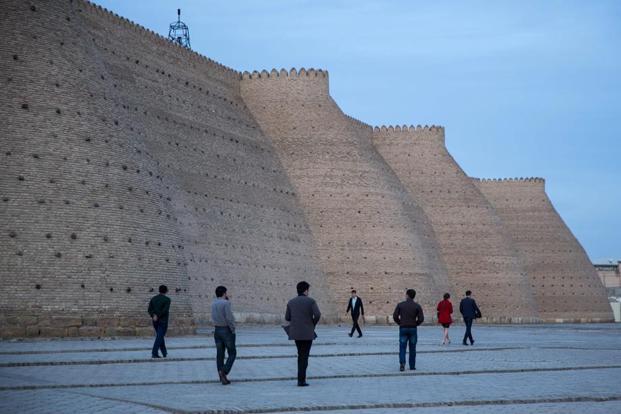
It is estimated that 30,000 people died after the Mongols conquered Bukhara, a result of most of the city surrendering but not the garrison.
Thirty thousand was a “moderate” number of people to be killed for Bukhara’s equally moderate resistance to the Mongol hordes.
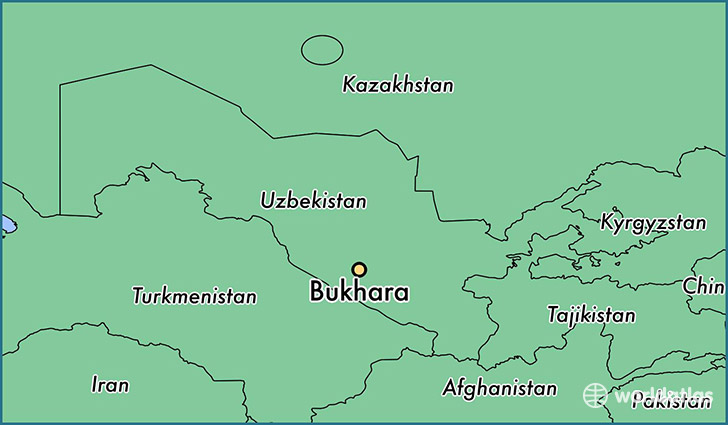
The Mongol invasion of Persia, which was ruled by the Khwarazmian dynasty at the time, happened just as the empire was emerging from expansionary conquests of its own. This meant that the Khwarazmians, while technically governing Persia, had little actual power in the region, and the resistance to the marauding Mongols highlights Persian weakness well.
Samarkand, 1220.
... his armies moved west and targeted Persia in 1219, where the Sultan had, in an act of extreme foolhardiness, deliberately provoked Genghis by shaving off the beards of two of his ambassadors and killing a third. Samarkand, that glorious city on the Silk Road, fell in 1220, despite the defenders’ super-weapon of two dozen war elephants. McLynn dismisses the oft-quoted figure of 50,000 killed there in a single day (note the limited time span), but admits ‘it is clear that the death toll was terrific and unacceptable’. -Spectator
Samarkand, the makeshift, emergency capital city of the Khwarazmian dynasty, was much larger than Bukhara and much better fortified. (Samarkand, was made a legitimate, non-emergency capital by Tamerlane 150 years after the Mongol siege and conquest.)
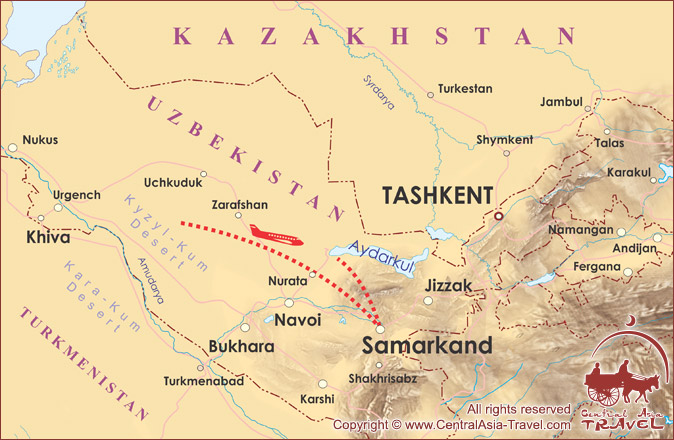
The Mongols used prisoners as body shields during the assault, and pulled off a brilliant tactical stunt when they collectively feigned retreat, drawing out the Persian garrison, only to turn on the careless attackers and slaughter them in the open field of battle.
Due to the fame of Samarkand far and wide, Genghis Khan spared the inhabitants of the city but did loot it and conscripted another estimated 60,000 for military service or craftsmanship. This left Samarkand, glorious from the time of Alexander the Great, empty of people and empty of riches.
Lahore, 1241.
Lahore is today the largest city in the Punjabi world, and one of the most important cities in all of Pakistan.
In 1241, when the Mongols laid siege to it for the first time, Lahore had already been abandoned for Delhi by elites who were worried about the unrest caused by the Mongol invasions in neighboring countries.
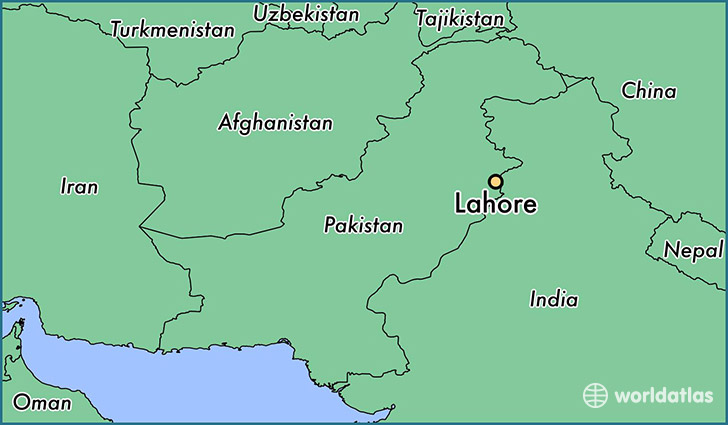
When Persia fell, for example, some of the Khwarazmian dynasty’s elite fled to Lahore, where they conquered the city and tried to establish a new dynasty.
The locals retook Lahore from the fleeing Persians, but this confusion only weakened the city and by the time the Mongol horde arrived in 1241, Lahore was ripe for the plucking.
The Mongols soon lost the city to yet another reconquest by the locals, but this back-and-forth between the marauding Mongols and the local elites rendered Lahore, once a prominent center of Islamic education and culture, a frontier urban area, fit only for fighting and brusque commerce with non-urban peoples.
Lahore’s frontier status, while bad for this once-prestigious city, enable the Indian subcontinent to largely avoid the fate of China, the Middle East, and Eastern Europe.

Genghis Khan Diverted A River Through An Enemy’s Birthplace To Erase It Off The Map
When Genghis Khan found the Muslim kingdom of Khwarezmia, he did something unusual: He took the peaceful route. A group of diplomats were sent to the city, hoping to establish a trade route and diplomatic ties.
The governor of Khwarezmia, though, didn’t trust them. He thought the diplomats were part of a Mongolian conspiracy and had them executed. He killed the next group they sent, too.
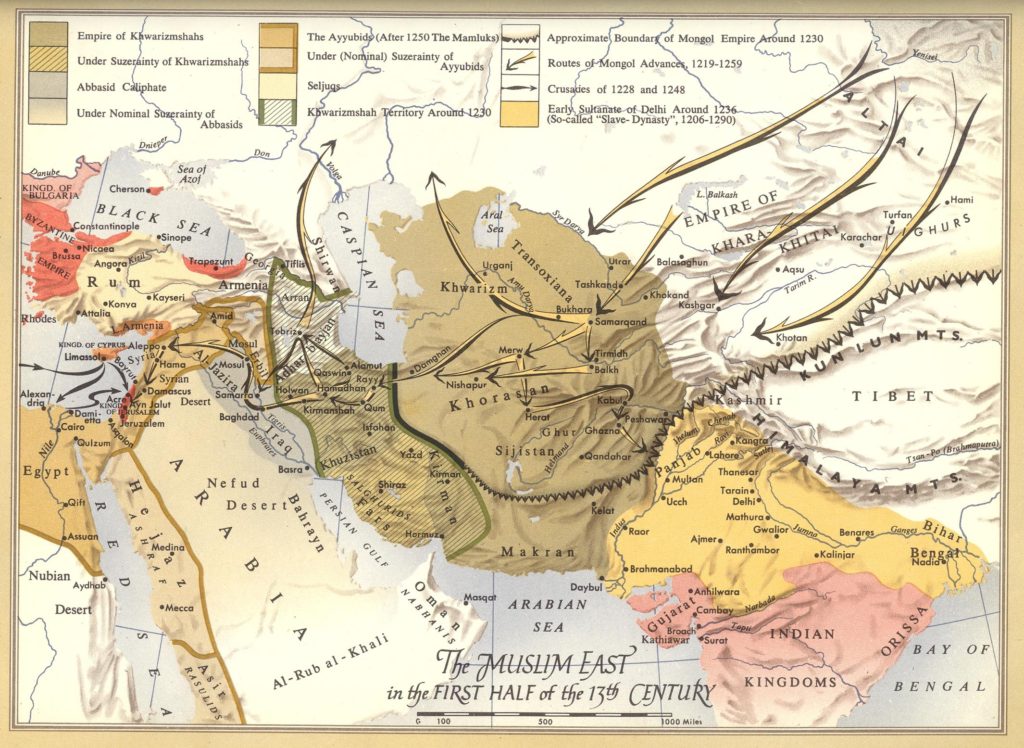
Genghis Khan was furious. He had tried to be nice, and he’d been repaid with dead diplomats. He set up an army of 200,000 soldiers, attacked, and completely destroyed Khwarezmia.
Even after he’d won, Khan sent two armies to burn down every castle, town, and farm they found to make sure that no hint of Khwarezmia survived. According to one story, he even diverted a river to run through the emperor’s birthplace, just to make sure it would never appear on a map again.
Genghis Khan Erased A Kingdom From History For Not Helping Him
When Genghis Khan attacked Khwarezmia, he asked the conquered kingdom of Xi Xia to send him troops. They refused. Xi Xia tried to take a bold stand against their oppressor, and they quickly regretted it. The Mongolian army swarmed through Xi Xia, destroying everything that they found. They systematically exterminated every member of the population.
By the end, Xi Xia was erased from history.
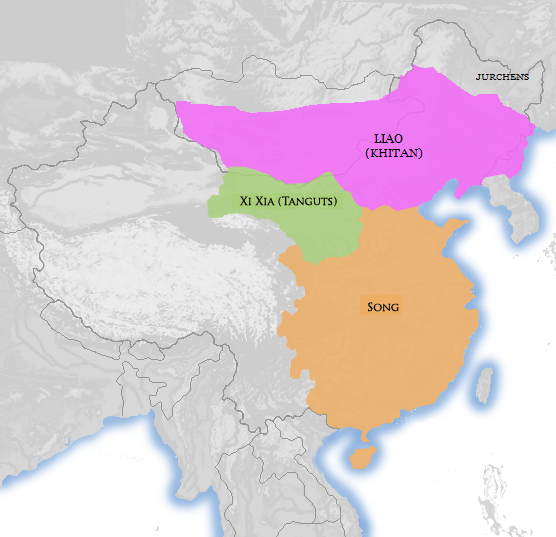
They hadn’t written down their own stories, so the only records of their existence came from neighboring countries. Their language wasn’t recovered for more than 700 years. It took until the mid-20th century for archaeologists to unearth stones that had their writing on them. In the meantime, every word they had spoken was forgotten.
Genghis Khan died during the battle, most likely from being thrown from his horse. Still, the Mongolian army carried out his work. They slaughtered every person they found, even after their leader was dead and their enemy had surrendered.
The Yuan Dynasty
In 1251, Mongke was elected Great Khan and decided to intensify the war with the Song Dynasty.
In 1253, some 100,000 Mongols and their Chinese allies captured Dali and Yunnan and crossed through Laos to attack the Song Empire’s southern flank.
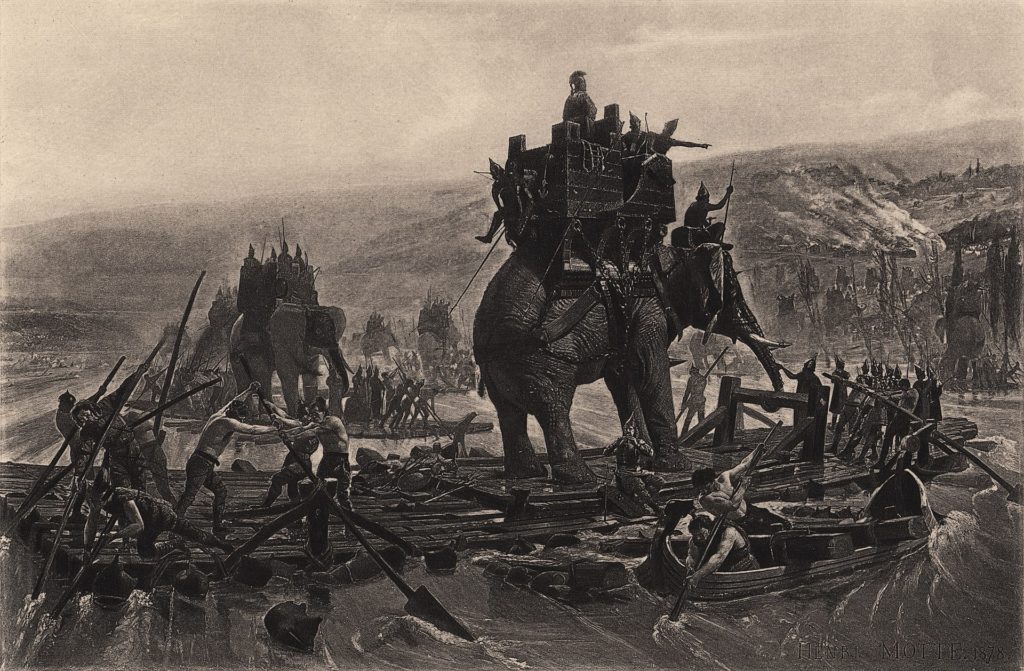
The next year, the Mongols clashed with more than 100,000 Song troops and 1,000 war elephants near the Laotian border. The Mongol horses would not charge the elephants, so the Mongols dismounted and fired flaming arrows to kill or enrage the great animals, which became uncontrollable and randomly killed men on both sides.
The battle degenerated into a chaotic hand-to-hand battle.
Both armies virtually annihilated each other, and the Mongols withdrew into Laos with only 20,000 men.
In 1257, Mongke made the mistake of invading Da Viet (North Vietnam) and lost most of the rest of his men and horses to disease in the intense tropical conditions.
In 1258, Mongke pulled together 300,000 Mongol and Chinese soldiers to face a massive army of over 400,000 Song Chinese troops under General Wang Jian in Sichuan.
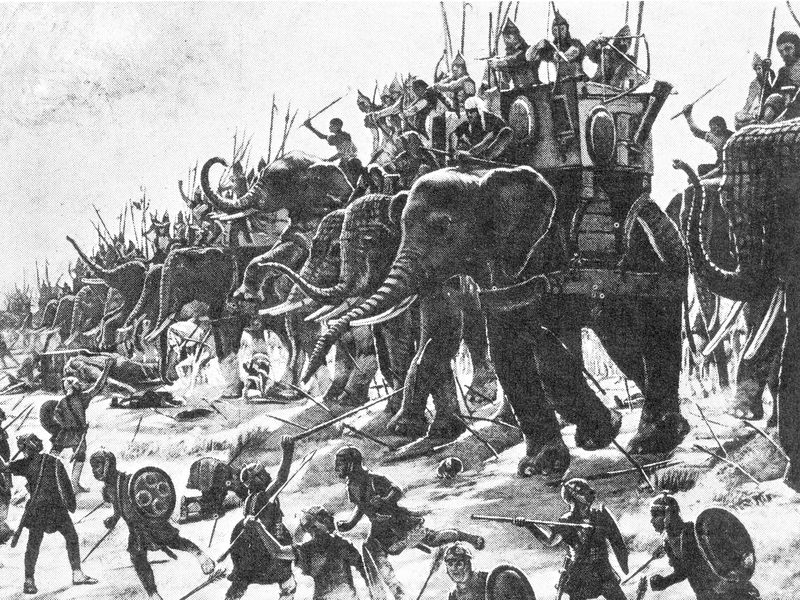
In 1259, the two sides met at the Battle of Diaoyucheng. During the battle, Mongke collapsed and died from cholera and dysentery. The battle ended in stalemate, with more than 100,000 dead on both sides, including Wang Jian.
The new commanding Song general, Jia Sidao, collaborated with Genghis Khan’s grandson, Prince Kublai, and worked out a deal whereby the Song army would occupy Sichuan under Mongol authority.
The Death of Genghis, the Ascension of Ogedei
Despite the overwhelming victories, the Mongols were trapped in a long war of attrition in China.
Rather than finish the conquest of the Jin, Genghis became sidetracked in 1217 in the destruction of Khwarezm (Iran, Pakistan, and Afghanistan), an Islamic holocaust in which more than a million people were massacred by the Mongols.
During the campaign to conquer Khwarezm, the Mongols brought in thousands of Chinese engineers, siege engines, and crews to help reduce Islamic fortifications.
In 1223, Genghis turned his attention back on the Jin.
He sent a trusted general, Mukhulai, with 100,000 troops to attack Chang’an, which was defended by 200,000 Jin troops. Mukhulai became ill and died. As soon as this happened, the Xi Xia troops abandoned the Mongol army, which in turn caused the siege to be abandoned.
Genghis then hunted down and killed the Xi Xia troops who had deserted his army.
Genghis himself died in 1227, probably from typhus, while planning yet another massive invasion of Jin.
His son, Ogedei, ascended the throne and sent envoys to the Jin, who promptly had them executed. Meanwhile, Subedei was to conduct one last effort to conquer the Jin in 1231. The Jin armies all faced north to prevent Subedei’s 120,000 Mongols from crossing the Yellow River. Subudei sent a general named Tuli with 30,000 Mongols on an arduous journey across the western Chinese mountains of Sichuan and through Song territory into southern Jin territory.
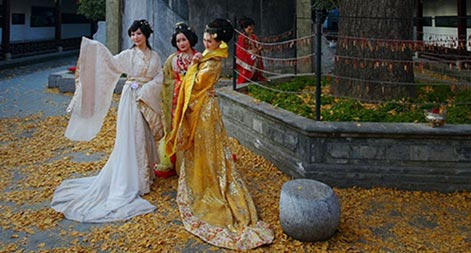
The Jin panicked, thinking the Mongol force was much bigger than it was.
The Jin repositioned the majority of their troops to the south and began pursuing the Mongols with a massive force of over 300,000 men. The Mongols retreated as planned into the Sichuan Mountains as the huge Jin army followed them.
The Mongols fought a tenacious rearguard action with their archers in the rough mountain terrain, killing thousands of pursuing Jin. The Mongols led the Jin higher and deeper into the snow-covered mountains, where additional thousands froze to death or fell off the icy trails.
The Mongols circled back through the mountain passes and destroyed the Jin baggage trains, adding starvation to the woes the Jin troops were already enduring.
Once Subedei had the main Jin army trapped in the mountains of Sichuan, he moved his 120,000 Mongols across the Yellow River against the much smaller Jin forces.
The Jin belatedly realized their mistake and began desperately trying to get their main army out of the mountains to defend the capital.
The Jin retreat turned into a rout as Tuli’s and Subedei’s forces massacred the entire Jin army without mercy on the open ground within sight of Kaifeng.
A Five-Year Siege of the twin fortress cities of Xiangyang and Fancheng.
In 1265, a Chinese allied naval force destroyed 100 Song ships in a river battle, and Mongol troops defeated the isolated Song army to regain control of part of Sichuan.
The key to conquering the Song was capturing the twin fortress cities of Xiangyang and Fancheng.
Both cities had thick walls with wide moats protecting the convergence of the Han and Yellow Rivers.
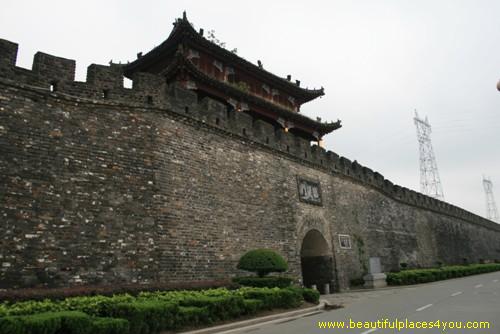
In 1268, the Mongols built fortifications downriver from Xiangyang on the Han River to cut off resupply of the city by ship. Never the less, most Song ships were able to run by the Mongol forts and resupply Xiangyang and Fancheng.
Chinese ships allied with the Mongols were brought in to block the passage between the Mongol forts. More than 20 miles of siege lines were built around Xiangyang and Fancheng on both sides of the Han River.
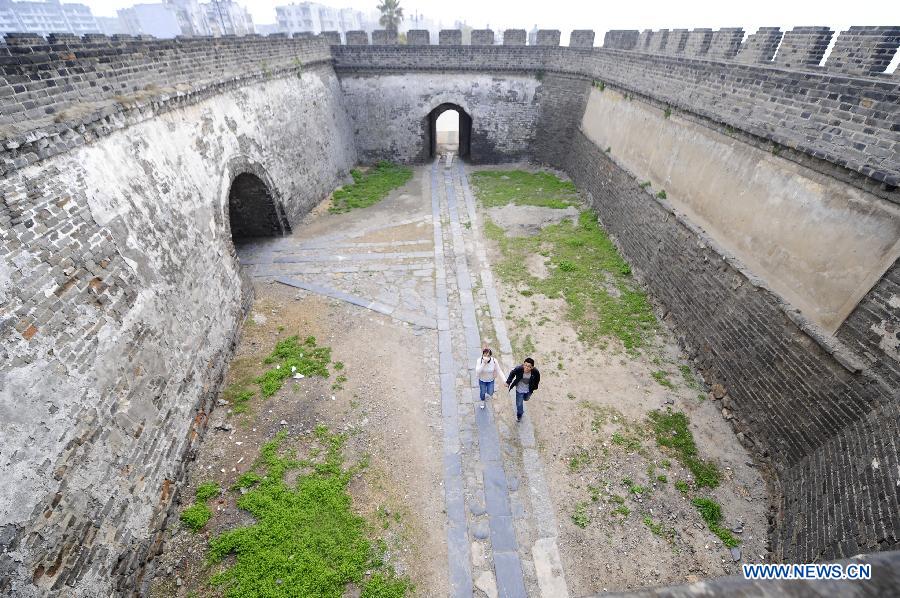
The Mongols and their Chinese engineers set up trebuchets and began firing incendiary clay bombs and exploding biochemical projectiles they had learned from the Jin at the siege of Beijing in 1215.
The Song fired incendiary bombs and biochemical projectiles at the Mongols as well, causing great destruction and loss of life on both sides. The Mongols had to pull back after their wooden siege walls and trebuchets caught fire from the bombardments, leaving the Mongols with no cover, while the Song defenders took shelter behind the twin cities’ stout rock and masonry walls.
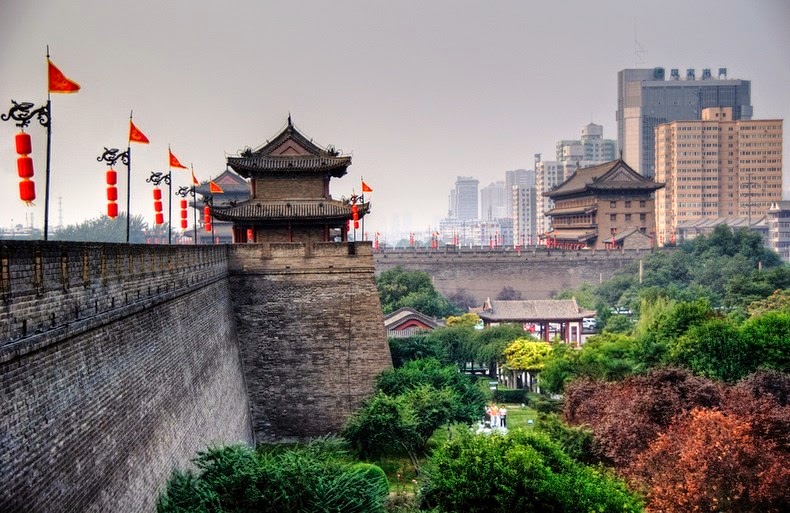
In 1269, Kublai Khan sent another 20,000 troops to replace those in the previous year’s fighting. More than 3,000 Song ships attacked the Mongol forts on the Han River in an effort to break the blockade, but 500 ships were sunk by Kublai Khan’s brilliant admiral Liu Cheng, who had defected to the Mongols.
Mongol and Chinese troops clambered aboard the Song vessels and beheaded hundreds of Song soldiers and sailors.
The besieged Song tried several unsuccessful attempts to break out but were defeated each time with thousands of casualties.
In 1271, 100 Song ships successfully broke through a boom across the Han River to bring 3,000 soldiers and much-needed supplies to reinforce Xiangyang.
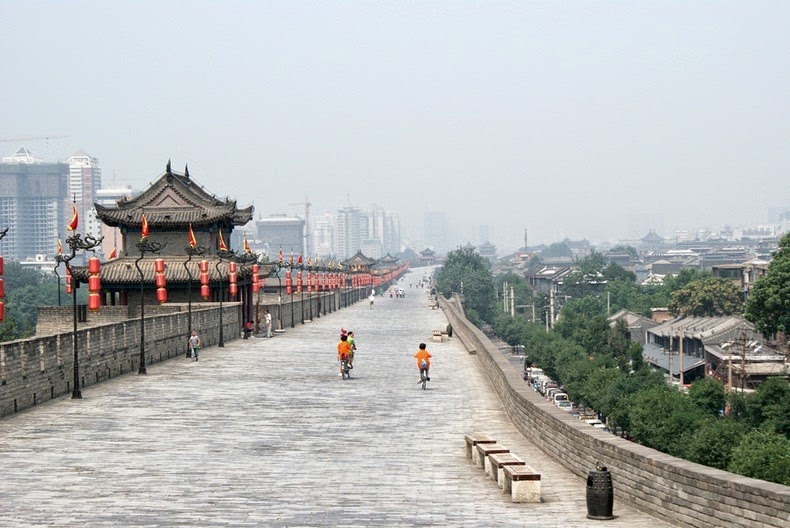
The siege dragged on with no real advantage for either side until Kublai Khan decided to send a Muslim engineer captured during the siege of Baghdad to China to build a giant 40-ton trebuchet that could hurl 220-pound projectiles more than 600 feet to breach the cities’ walls.
After a few days, a breach was opened and Mongol troops stormed through to meet the Chinese defenders.
For days, men fought and died in the vicious battle at the breach.
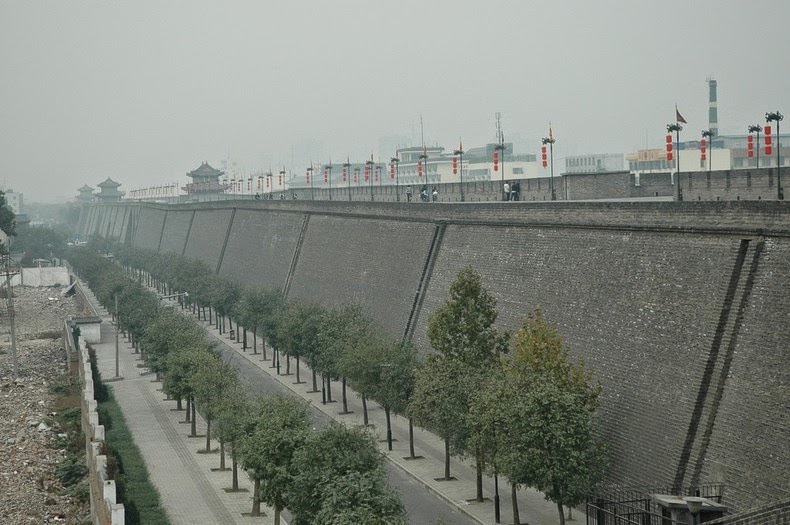
The Song were able to throw more soldiers into Fancheng to defend the breach from a pontoon bridge that connected Xiangyang across the Han River.
The Mongols called off the assault on the breach and used their giant trebuchet to widen the breach and destroy the pontoon bridge. Incendiary bombs fired from the trebuchet struck the bridge and consumed it.
With Fancheng cut off from reinforcements, the Mongols assaulted the widened breach. The disheartened defenders held on for several hours before resistance broke and the Mongols poured into the city and began massacring the inhabitants.

The Mongols took the last 3,000 Song soldiers and 7,000 inhabitants to the walls facing Xiangyang and in full view slit the prisoners’ throats and threw them off the wall.
The Mongols then dismantled their giant trebuchet and repositioned it across the river facing Xiangyang. The first shot from the trebuchet forced a tower to collapse in a great crash as the Song inhabitants screamed in terror.
Kublai Khan offered to spare the inhabitants and to reward the Song commander if he would surrender the city.
Xiangyang was surrendered and the Song heartland was open to the Mongols. The siege had lasted from 1268 to 1273.
The impregnable fortress of Yang-lo.
In 1274, the Mongols headed down the Han River, bypassing Song fortresses and emerging onto the flood plains of the Yangtze River. The Mongols now faced the impregnable fortress of Yang-lo.
The Mongols sacrificed several thousand Chinese troops on a frontal attack on Yang-lo while most of the Mongol army, carrying a number of ships, bypassed the fort and crossed the river upstream.
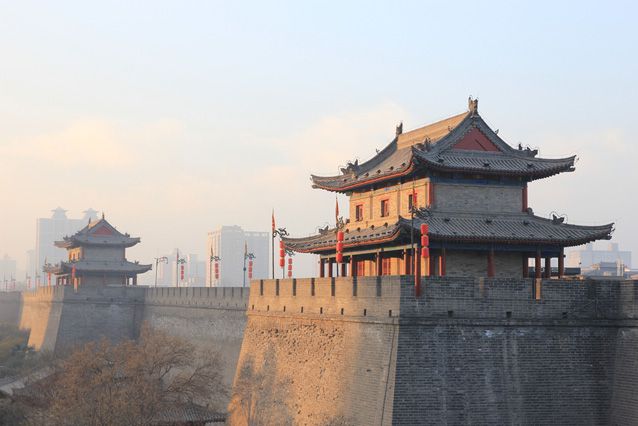
Then the Mongol and Chinese fleet came down the Yangtze and attacked the Song fleet from both front and behind. The Song boats were packed so close together on the river that incendiary bombs fired from Mongol catapults set much of the Song fleet on fire.
Thousands perished in the flames.
Fortress Yang-lo and the 100,000 cut-off Song troops surrendered the next day.
Genghis Khan Exterminated 1.7 Million People To Avenge One Person
The marriages might have been strategic alliances, but that didn’t mean there wasn’t any love involved. One of Genghis Khan’s daughters loved her husband, a man name Toquchar. Genghis Khan loved him, too, as his favorite son-in-law.
When Toquchar was killed by an archer from Nishapur, his wife demanded vengeance. Genghis Khan’s troops attacked Nishapur and slaughtered every person there. By some estimates, 1,748,000 people were killed. Other historians dispute that number, but there’s no doubt that his armies killed everyone they found.
Women, children, babies, and even dogs and cats were tracked down and murdered.
Then they were beheaded, and their skulls were piled into pyramids—a request by Genghis Khan’s daughter to ensure that no one got away with a simple wounding.
Acts of Desperation
In 1275, Jia Sidao set out from the capital of Hangzhou at the head of 100,000 Song troops and another fleet of 2,500 ships in a last-ditch effort to stop the Mongol juggernaut.
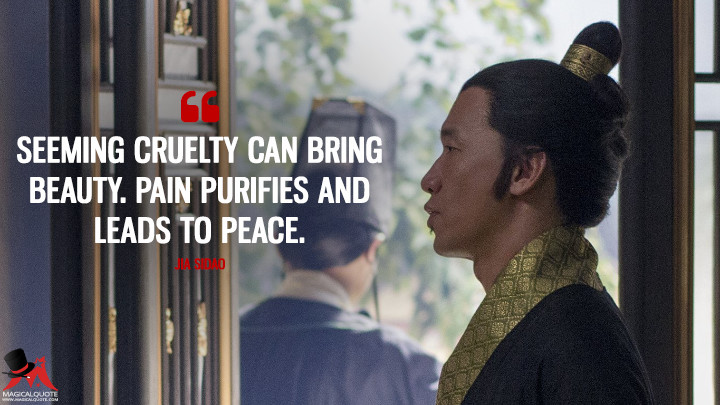
A massive cavalry and infantry battle took place on both sides of the river. The Mongols and their Chinese allies pushed back the Song army and boarded their ships from both ends of the river, beheading thousands of Song troops and capturing 2,000 ships.
It was another overwhelming victory for the Mongols.

Jia Sidao was later assassinated by a Song officer.
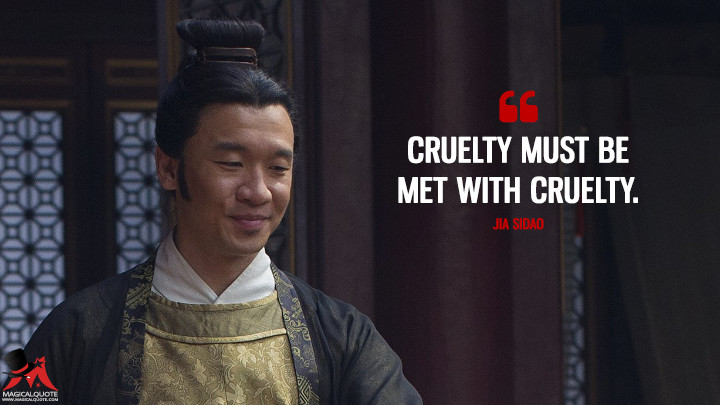
On February 21, 1276, the boy emperor Zhao Xian came out of Hangzhou, bowed toward the north in obeisance to Kublai Khan, and turned over the capital and the rest of the Song Empire to the Mongols.
The Mongol conquest of China had taken 74 years and claimed the lives of as many as 25 million Chinese from war, plague, and famine.
As much as Mongolians love Genghis Khan, Iranians hate him. And there is a legit reason for that. The Khwarazmian Empire was located in the territory of Iran, and it was a very powerful dynasty up until the Mongol Empire invaded it. In just a few years, the Mongols with Genghis Khan ahead of them, entirely destroyed and conquered the Khwarazmian Empire. Scholars estimate that during the wars, Genghis Khan butchered around 3/4 of the Iranians. That is one of the biggest genocides in history, and estimations show that the population of Iranians only reached its pre-Mongols level in the mid-20th century. Oh yes, it took Iranians 700 years to heal their deep wounds left by Genghis Khan. Even today, Iranians have a saying "it's as if the Mongols have attacked," which means that something chaotic and brutal has happened. Thanks to Genghis Khan, Iranians will never forgive Mongols their crimes. -The Richest
Ramifications
The ramifications of the Mongol conquest of China were felt for some time. The Ming, who overthrew the Mongols in 1368, became obsessed with improving and lengthening the Great Wall to close to 5,000 miles (including walls that backed up walls) to prevent another Mongol invasion of China.
This was the ancient version of The Maginot Line. A very costly and enormous albatross.
The Great Wall as it existed from the time of the Ming Dynasty was an expensive reaction to the Mongol conquest of China. In the end, the improved Great Wall did not save China.
In 1644, a Mongol-like nation, the Manchu, conquered China and ruled the unhappy nation until 1911.
Re-population of conquered lands.
The Mongols completely repopulated Asia in their own image.
Incursions into Southeast Asia were largely successful, most factions agreed to pay tribute, and only the Invasions into Vietnam and Java failed. Europe was devastated by the Mongols. They destroyed near enough every major Russian city, and invaded Volga Bulgaria, Bulgaria, Poland, and Hungary. If rumours spread that the Mongols were coming, then it would cause a mass panic, and some would run to safety. There was no guaranteed way to defeat the Mongol hordes, they continuously defeated much larger armies, so numerical strength couldn’t protect you. Mongol conquests would leave once populous and flourishing areas as wastelands, with little to no people, those remaining would be slaves. -ESKify
They used their abilities, and fear of the meek, to seize control.
The Mongol were masterful at spreading fear and hate throughout Asia, people feared them, and therefore hated them. They would rape and pillage entire villages, and torture their victims for fun. Nobles would get it the worst. Spilling noble blood was considered a crime, so they simply crushed them to death, which took many hours. Mongols would literally dine on top of them, making merry to the sounds of their screams from underneath. The sounds of bodies squelching, and bones snapping didn’t faze them. But rumours of this execution method struck terror. Fear made them powerful, as people often chose to surrender and pay tribute rather than risk fighting them. -ESKify
Women, gold, horses, and other objects were considered spoils of war, which meant soldiers got to do pretty much whatever they wanted to do with them. Now, you don’t have to stretch your imagination too much to figure out what that means.
Do you?
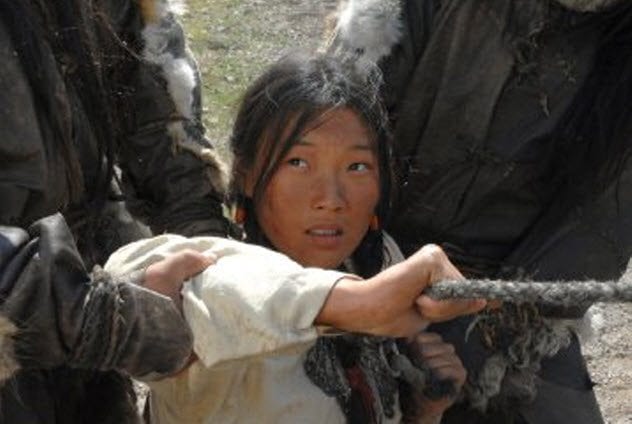
Amassing large harems was an important occupation of the khans. Genghis Khan was said to have had five hundred wives and concubines. When the Mongols overran a place, their captains took some of the women and passed along the more beautiful ones to their superiors, who passed the more beautiful to their superiors, and so on all the way to the khan, who could choose among the pulchritude of a continent. Genghis Khan had scores of children, as did other khans and nobles descended from him for centuries in the Genghis Khanite line. Recently, a geneticist at Oxford University, Dr. Chris Tyler-Smith, and geneticists from China and central Asia took blood samples from populations living in regions near the former Mongol empire, and they studied the Y chromosomes. These are useful in establishing lineage because Y chromosomes continue from father to son. Dr. Tyler-Smith and his colleagues found that an anomalously large number of the Y chromosomes carried a genetic signature indicating descent from a single common ancestor about a thousand years ago. The scientists theorized that the ancestor was Genghis Khan (or, more exactly, an eleventh-century ancestor of Genghis Khan). About eight per cent of all males in the region studied, or sixteen million men, possess this chromosome signature. That’s a half per cent of the world’s entire male population. It is possible, therefore, that more than thirty-two million people in the world today are descended from Genghis Khan. -The New Yorker
On the other hand, if you were lucky enough to be super-extra beautiful, you could be forcibly entered into one of Genghis Khan’s weird beauty pageants.
Genghis Khan had so much power that he could do whatever he wanted. For instance, when Genghis occupied some new area, he would kill or enslave all the men and share all the women amongst his tribe. Genghis Khan would even make beauty contests of captured women to decide which woman is the most beautiful one. Yeah, he was having his Miss Universe competition before it was cool. So, the queen of those beauty competitions would win the privilege to become one of many Genghis Khan's women. Rest of the Mongolian army would share all the other contestants. -The Richest
According to Ancient Origins, once Genghis’ soldiers were done with the pillaging and the abusing, they brought Genghis himself the most beautiful women they’d encountered.
I’m sure that Genghis appreciated the sentiment.
Girls in Mongolia seem to be a mystery to all but those who have visited these rare lands. These unique girls offer Asian features with larger bodies than most expect. I was baffled by the women I encountered in Mongolia. I’d never seen such tall, curvy Asians (well, Indonesian girls are curvy) in all of my travels throughout the region. There was truly something different about the Mongolian girls. After meeting, greeting, and mating with some of these fine specimens, it finally clicked – these gals were direct descendants of Genghis Khan. I was balls deep in warrior genes, and I can’t lie – the thought of having myself a warrior-blooded baby certainly went through my mind. -Life around Asia
These women alone would be spared from the antics of the conquering army so they could be paraded in front of the man himself. The winner got the honor of becoming one of Genghis Khan’s many wives, which was probably preferable to ending up as the loser, though Ancient Origins doesn’t say what happened to them.
First and foremost, these girls were definitely Asian. Their features were dainty and stunning. However, Mongolian girls did not remind me of Thai girls or Indonesian girls much. They seemed to have a unique mixture to them. I’d say many of the girls looked maybe 75% Asian with a mixture of Slavic genes, too. It was incredibly unique and quite sexy. Some guys said they weren’t too into the look, but I loved it! Think a girl who is 2/3rds Asian and a third Russian. How could that not be sexy?! -Life around Asia

Evidently, though, women who Genghis deemed not to be up to his standards of beauty were sent off with the soldiers to be abused and then discarded. So yeah, great to be a woman in peacetime Mongolia but when Genghis comes to town you might just want to emigrate to China.
0.5 Percent of all men alive today are believed to have a genetic relation with Genghis Khan. It is estimated that his descendants are 8 percent of men in Asia. -My Interesting Facts
The fate of the civilians.
Although Genghis Khan restricted the use of torture, Mongol executions were often extremely grisly.
When Guyuk Khan suspected that the powerful courtier Fatima had poisoned his brother, Guyuk had her tortured into confessing before “her upper and lower orifices were sewn up and she was rolled up in a sheet of felt and thrown into the river.”
The Mongols traditionally had a taboo against shedding royal blood, so another favorite method of execution was crushing.
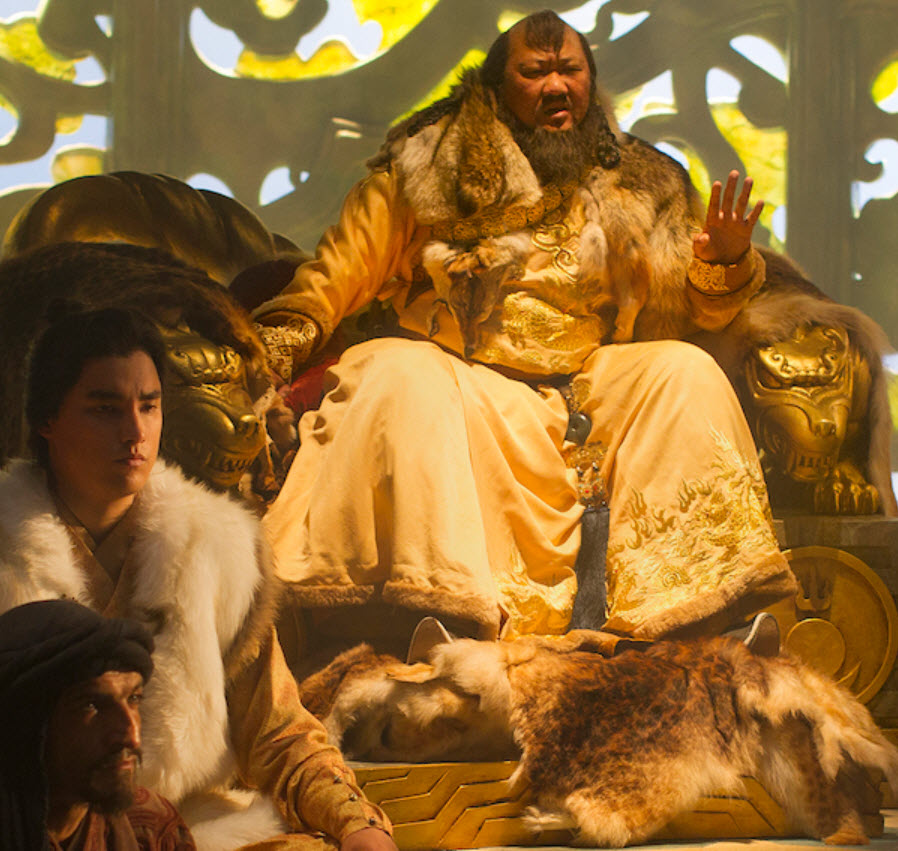
The Abbasid Caliph al-Musta’sim was rolled up in a carpet and trampled to death by stampeding horses.
After the Battle of the Kalka River, captured Russian princes were shoved under some floorboards and crushed as the Mongols held their victory feast on top of them.
Genghis himself ordered that a captured Tangut ruler be renamed Shidurqu (“Loyal”) before he was crushed, so that his spirit would be forced to serve the Mongols in the afterlife.
He was lucky compared to the Persian noble who was covered in sheep fat, wrapped in felt, and left tied up in the hot sun to meet his fate.
Genghis Khan’s Legacy
Perhaps the greatest legacy a conqueror can leave is his progeny.
Genghis Khan wasn’t an especially gracious winner — after he was done with the conquering, he enjoyed abducting his enemies’ wives and either romancing them or brutalizing them, depending on how cool they were with being abducted by Genghis Khan.

In fact in one of his most famous quotes he waxed poetic about the joys of the post-conquering aftermath:
"The greatest pleasure is to vanquish your enemies and chase them before you, to rob them of their wealth and see those dear to them bathed in tears, to ride their horses and clasp to your bosom their wives and daughters."
Nice guy, that Genghis.
He wasn’t always content to romance just one woman at a time, either.
According to Ancient Origins, his army commanders were all super-impressed with his manliness because he frequently spent his evenings with multiple women. I mean, that was his role; to repopulate the conquered (now depopulated) lands in his image (literally).
While broad shoulders aren’t exactly a good trait on women, the women in Mongolia didn’t get the short end of the stick in other ways. In fact, I found some of the biggest Asian tits in the world to be in Mongolia. It was fantastic for me, as I’m a boobs man! There are a number of rain-thin Mongolian girls that have big, natural racks. I was thoroughly impressed. In fact, outside of Indonesia, I haven’t seen bigger tits in an Asian country. The asses here aren’t as amazing as the boobs, but there still above average for Asia. -Life around Asia

A stronger genetic pool…
He wasn’t that into birth control, either, in fact by modern estimates Genghis Khan has roughly 16 million descendants. Now, the study that put forth this hypothesis can’t actually prove that the individual they identified is Genghis Khan, since no one knows where the Mongol leader is buried and therefore they can’t recover any of his DNA.
But this person lived roughly 1,000 years ago in the Mongol Empire and must have had access to a lot of women, and there really aren’t that many people from history that fit that description, so the assumption is pretty sound.

When we look at what Genghis Khan achieved with the Mongol Empire, we cannot help but appreciate his mastermind as a warlord. It surely looks like Genghis Khan had three dragons with him just like Khaleesi. I cannot find any other explanation of Genghis Khan's success. I mean, he defeated Jin Dynasty's one million troops with only 90,000 Mongolians by his side. Yes, Genghis Khan managed to win a war with ten times fewer troops than his opponent's army. On top of that, he was invading China, so he had to overcome all the "little" problems such as the Great Wall of China. Genghis Khan with his army had destroyed over 500,000 of Chinese troop before getting control of Northern China and Beijing. The rest of the Chinese army had to surrender to the power of Genghis Khan. Destroying Jin Dynasty is only one of many examples of how great of a warlord Genghis Khan was. Also, he had some brutal and loyal men by his side, and let’s not rule out the dragon theory. -The Richest
Anyways, ol’ Genghis Khan was quite the fellow, and he really wanted to make good in the (now decimated) lands that he conquered. Because of this, and the history of his people, the women of Mongolia are what they are today.
I am an American Structural Engineer and spent approximately 1-1/2 years working in Mongolia, and living in UB. I have since moved on to another project in Cape Town, SA, however wanted to comment on perhaps the most accurate article I have read in relation to Mongolian women. I have additionally worked in several other Asian counties to include Singapore, Hong Kong, China, etc. I hope that you will agree that you cannot even “basically” compare the contemporary Mongolian woman to any other Asians. BTW, forget the “Asian Height Charts by Country” seen all over the internet – not even close. For example, China, S. Korean and even Japanese women are calculated taller in stature than Mongolian ladies – Not eve close! When I strolled through Sukhbaatar Square on warm days, it was not uncommon for me to see several Mongolian women 5′7″, 5′8″ even up to 5′10″. What stands out just as much, is that these ladies have shapes and many pronounced bust-lines; mainly due to diet (meat/dairy). They appear physically to be much stronger built than other Asians. The best way I can explain it, Mongolian women have physical shapes closer to Russian women than they do other Asians. Another distinguishing factor, many Chinese, Japanese women have very small hands and feet – not Mongolian women who have larger hands/feet. Consider this, for a country of just over 3 million people, Nearly 50% of all top Asian fashion models are from Mongolia. Battsetseg Turbat for example has been in many famous American commercials to include Budweiser and Apple. This is what surprised me most when I first stepped off the plane upon my arrival to UB. Mongolian women’s height can be deceiving when viewing online photos – the reason is that they have voluptuous shapes to accompany their height. An additional quality is personality. Mongolian women have big personalities, laugh loudly and not afraid to approach someone they may wish to meet. Additionally, Mongolian women when affronted, do not shy away as do other Asians, however will meet the confrontation head-on 100%. What I have also noticed, when in other parts of Asia, women will almost always give way when an American woman is walking down the sidewalk toward them. Not in UB – A Mongolian woman will expect the American woman to step aside most every time. In relation to toughness, Mongolia are second to none. In fact, Mongolian women have very little respect for American women, thinking them soft and spoiled (their words not mine). All Mongolian women are excellent horsemen, whether raised in the Ger District or city. They are like the land they inhabit, resilient and everlasting. I remember taking a walk around Sukhbaatar Square with a Mongolian lady I befriended to just enjoy the day . It was in November last year and nearly freezing. I remember she was wearing heels, barely covered up and seemed fine. I was layered to the hilt, still shivering although looked like the Michelin tire man with all my garb. She must have noticed I was freezing as suggested we walk to Millie’s Espresso to have lunch, drink something warm and relax. These women impressed me as they were able to balance their hardiness with their femininity. You are correct, there is a slight mix of Slav in most Mongolian ladies, however, does not distract from their Asian appearance. I do not know if I will ever return to Mongolia, however, the Mongolian ladies will have my respect and admiration for life. -Life Around Asia
Conclusion
We can learn a lot from the terrors of the past.
Genghis Khan devastated urban areas, cities, towns and villages and laid waste to entire swaths of land. This mass devastation would continue in other ways at other times. Whether it is the plagues that devastated Europe, or the World Wars that followed afterwards, entire well-established civilizations completely collapsed and the survivors had to pick up the pieces and start all over again.
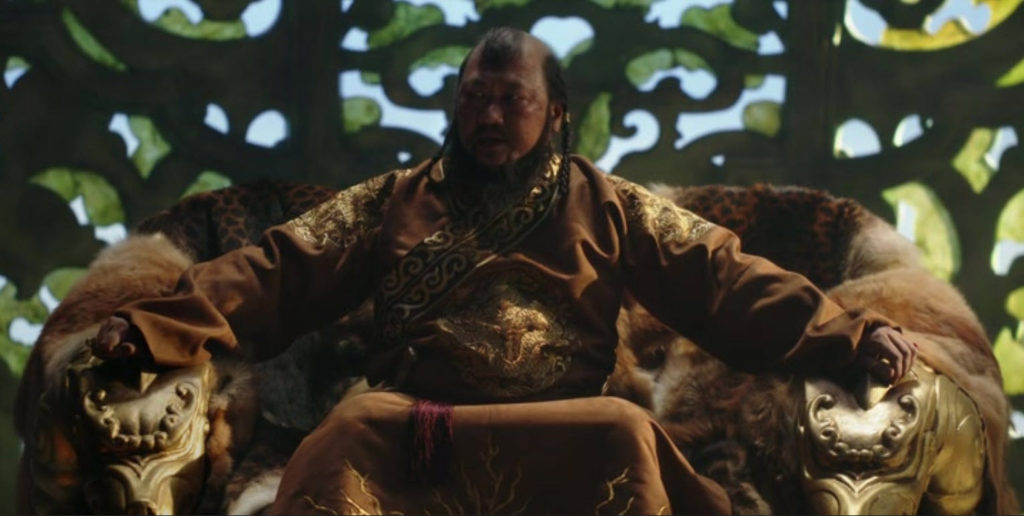
In the case of many human-wrought changes, it is a situation where a strong and powerful person becomes a leader and assimilates (often violently) other weaker communities. It’s human nature.
It’s the human condition.
Human nature is such that communities form, thrive, expand, get lazy and then collapse. Other humans, often more skilled, with abilities, and positions through merit exploit the vulnerabilities of the older community.

This event is often very uncomfortable and often results in open warfare, with the NEWEST and MOST DANGEROUS WEAPONS of the time.

They WILL be used.
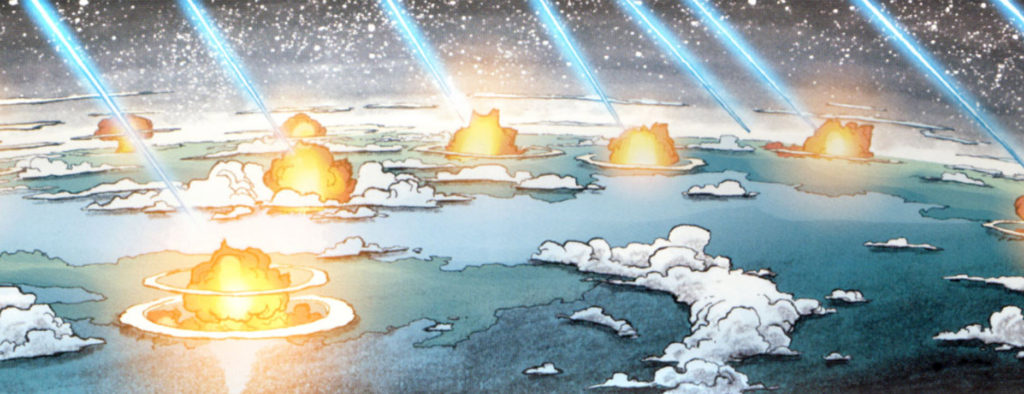
The strife might take different forms and last for a period of time, but in all cases… the human group managed through merit and ability will overcome the civilization that has become complaisant, lazy and slothful.
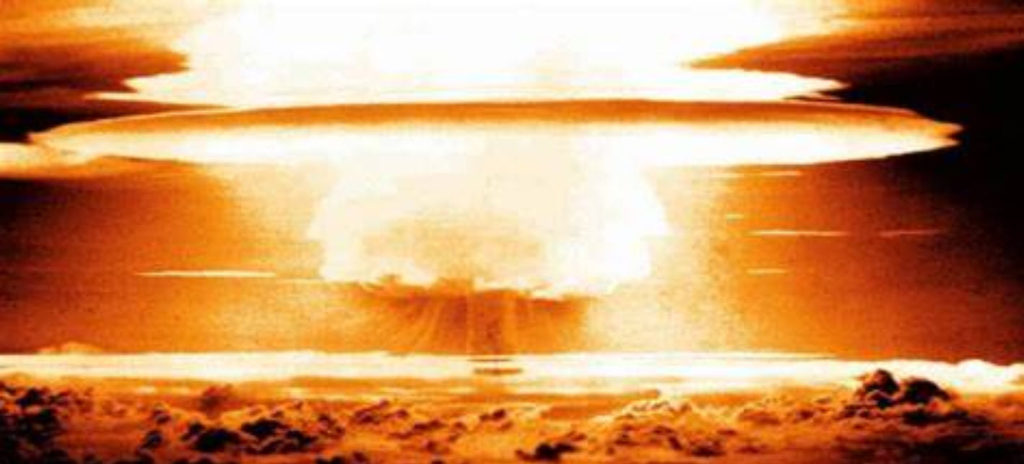
I used the Mongol takeover of Asia as an example, but the fall of America will be on a similar scale. It will not be sudden. It will not be uniform and homogeneous. But it will eventually be complete and the changes will be stunning.
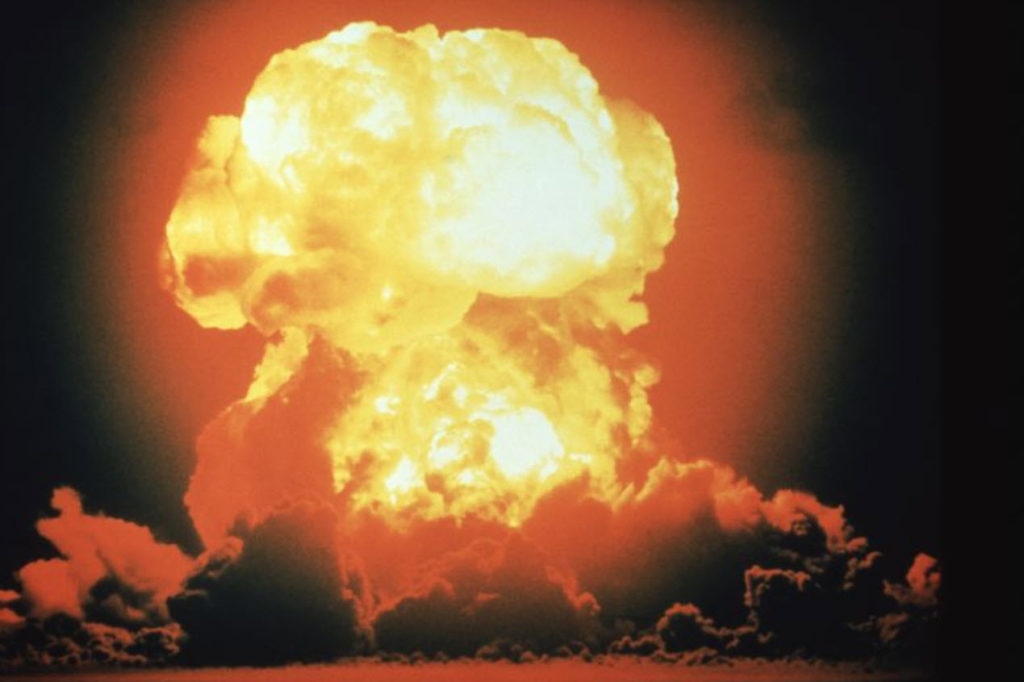
The world of the weak, corrupted, and confused will be purged, and a new world will manifest.
It will be reshaped by the strong.
It will be reshaped using the modern technologies of the time.

It will be reshaped in the image of the strong.
"... some fairly recent research has suggested that 0.5 percent of men worldwide (about 16 million people at the time of the study) can most likely trace their genetic lineage back to male-line descendants of Genghis Khan. " - 27 Genghis Khan Facts That Capture His Larger-Than-Life Legacy
To understand our future, you must understand our past.
And NEVER, ever think that the unthinkable could never happen. You will often be surprised with how evil, out of touch, or selfish humans can become. It is our very nature.
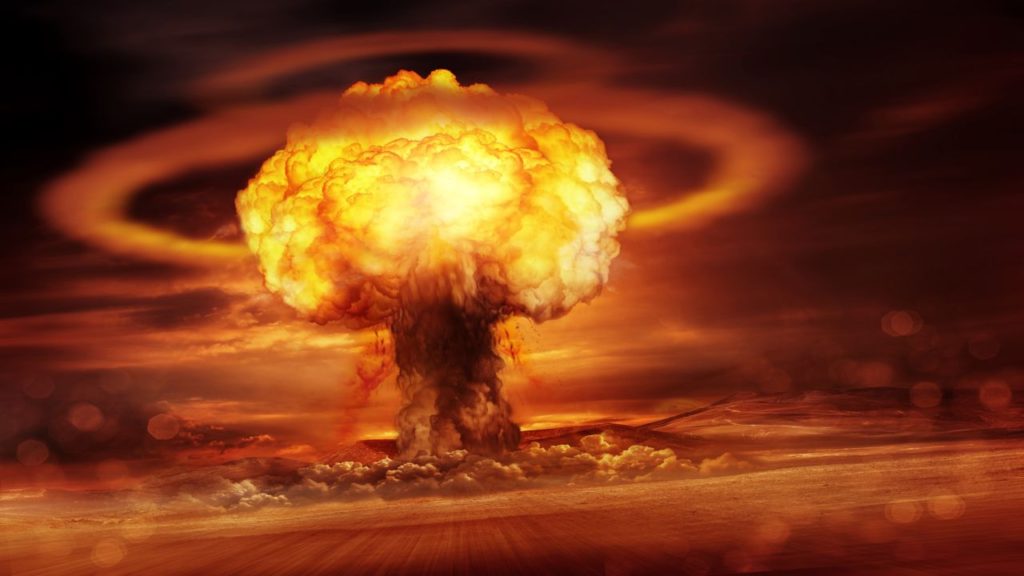
SHTF and Related Index
















































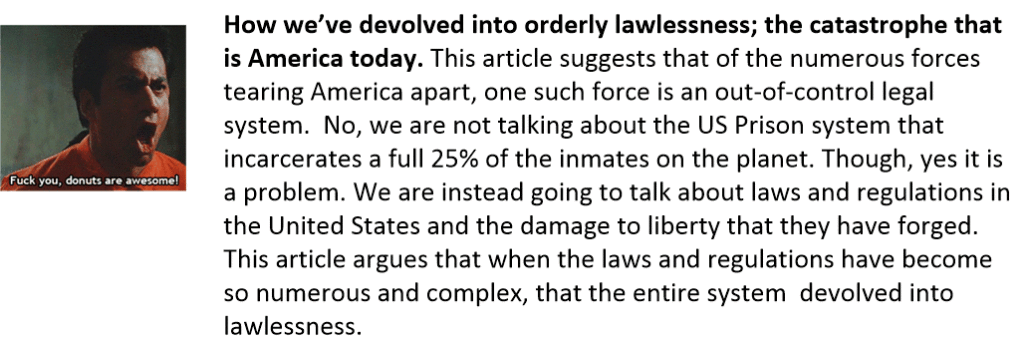





Some prepper humor…

Articles & Links
You’ll not find any big banners or popups here talking about cookies and privacy notices. There are no ads on this site (aside from the hosting ads – a necessary evil). Functionally and fundamentally, I just don’t make money off of this blog. It is NOT monetized. Finally, I don’t track you because I just don’t care to.
- You can start reading the articles by going HERE.
- You can visit the Index Page HERE to explore by article subject.
- You can also ask the author some questions. You can go HERE to find out how to go about this.
- You can find out more about the author HERE.
- If you have concerns or complaints, you can go HERE.
- If you want to make a donation, you can go HERE.

